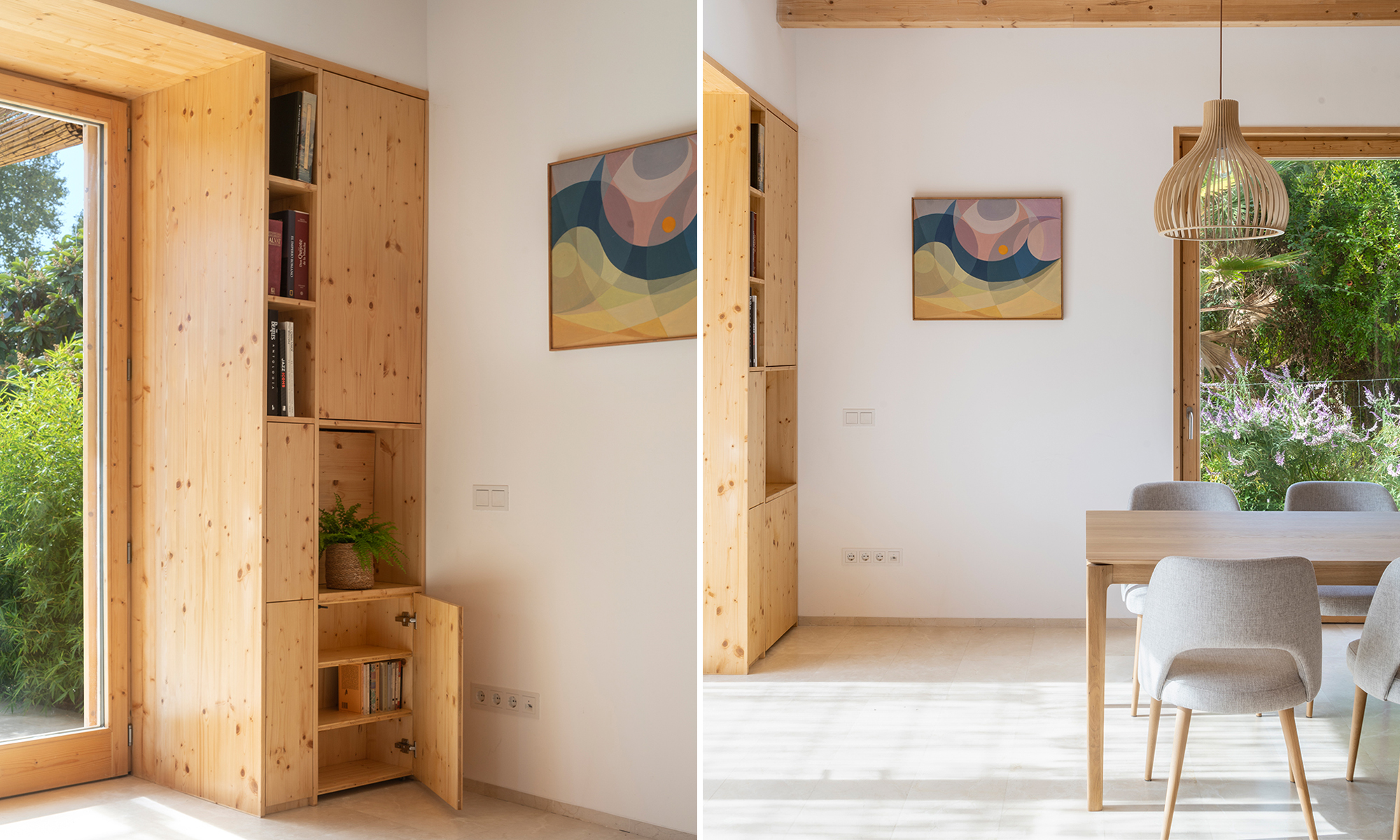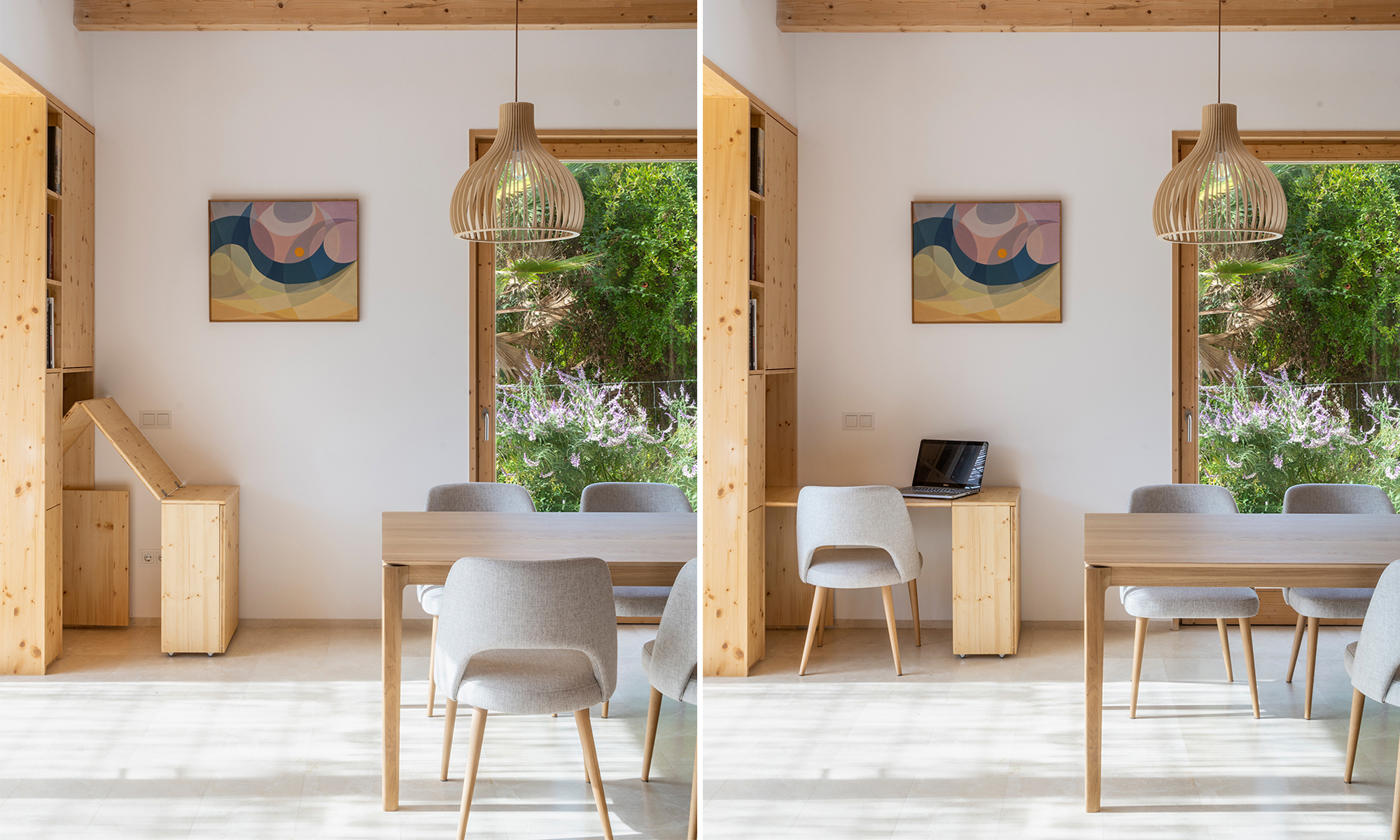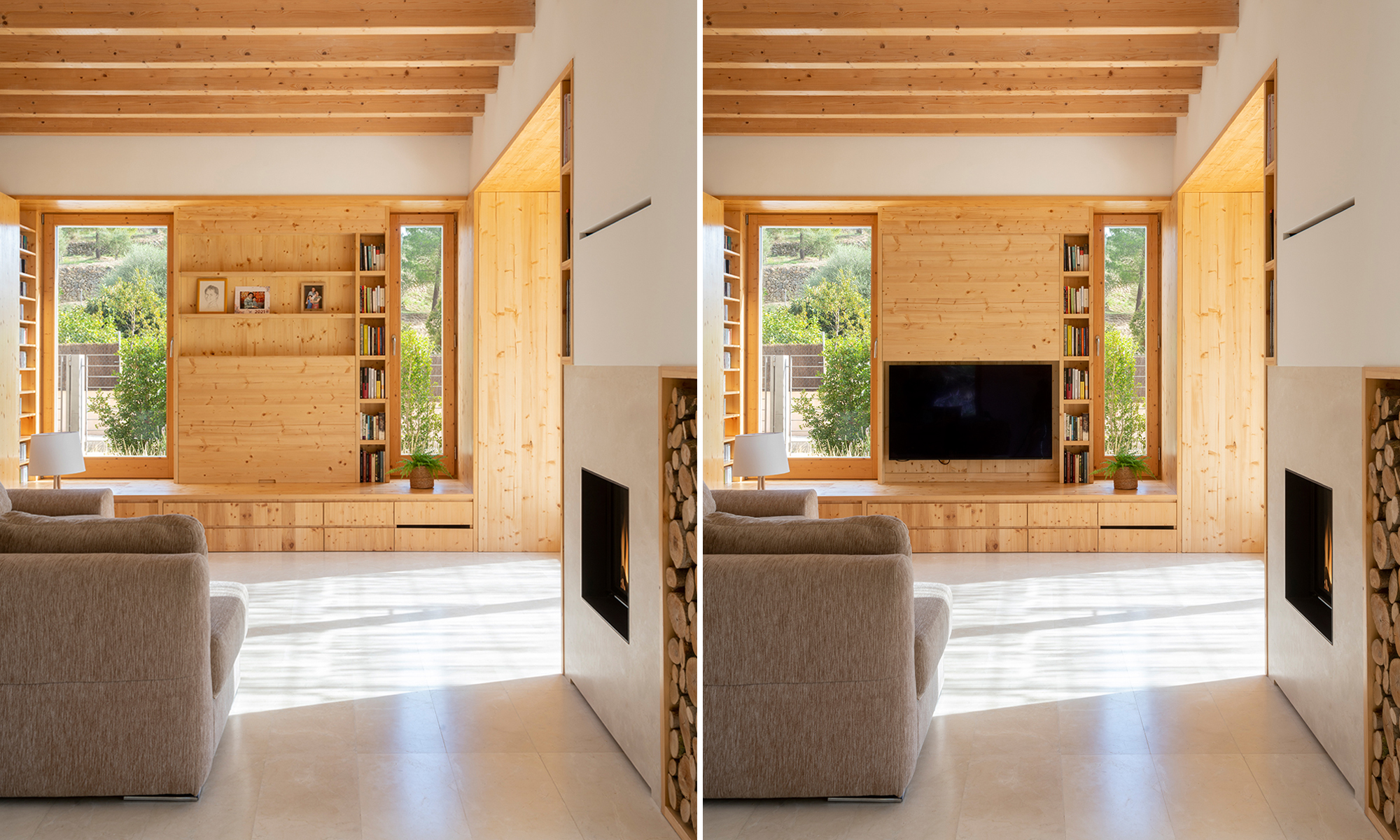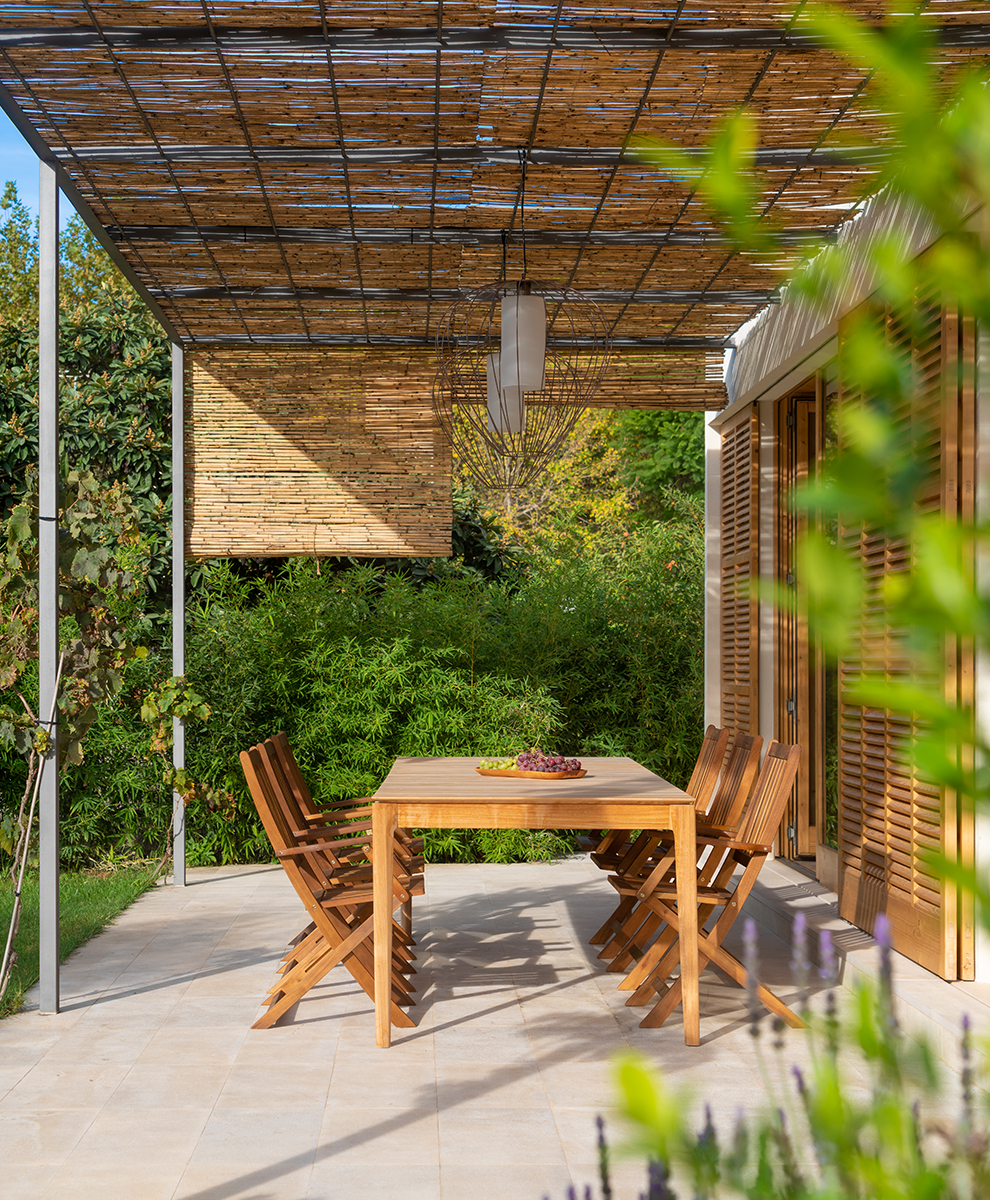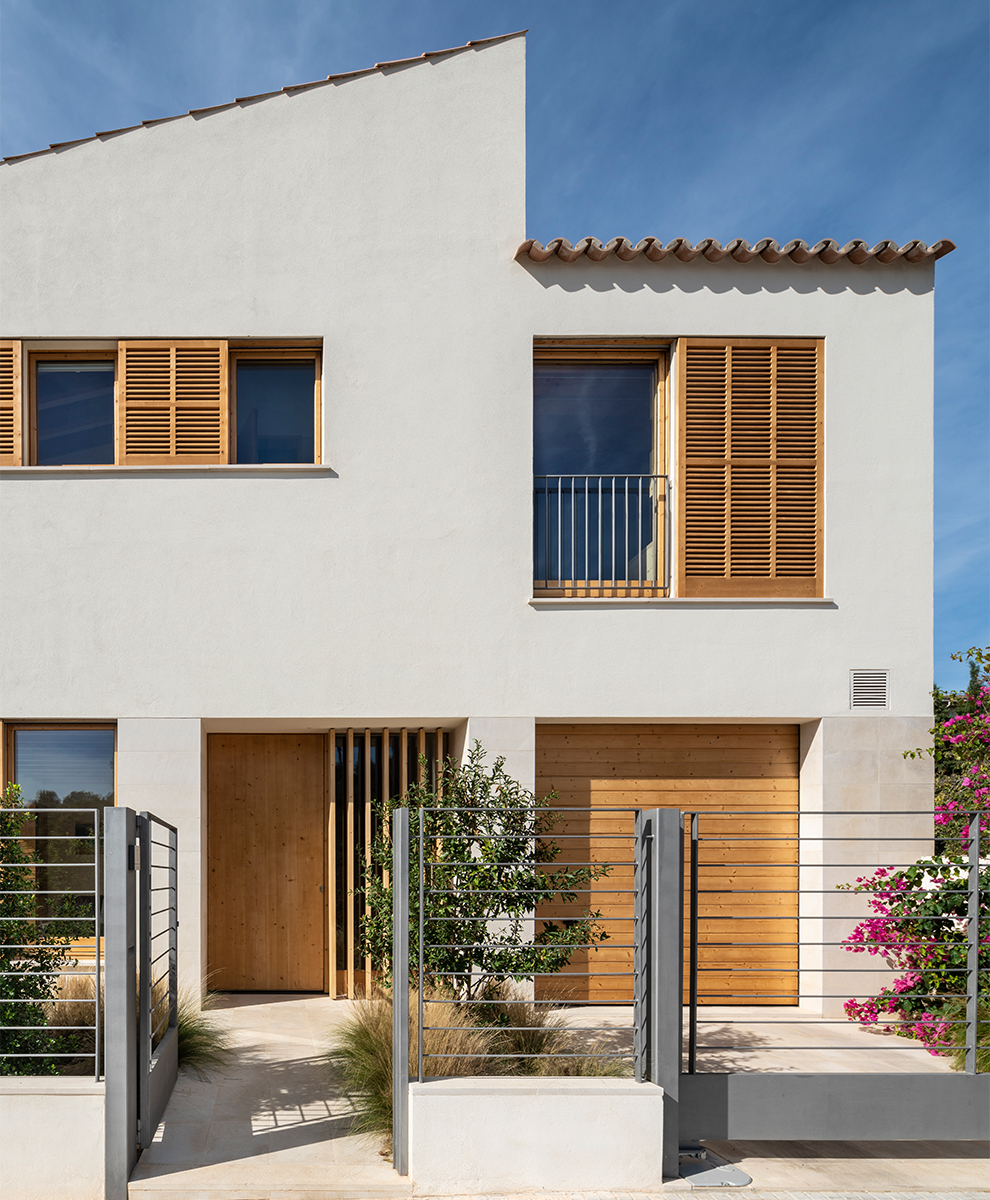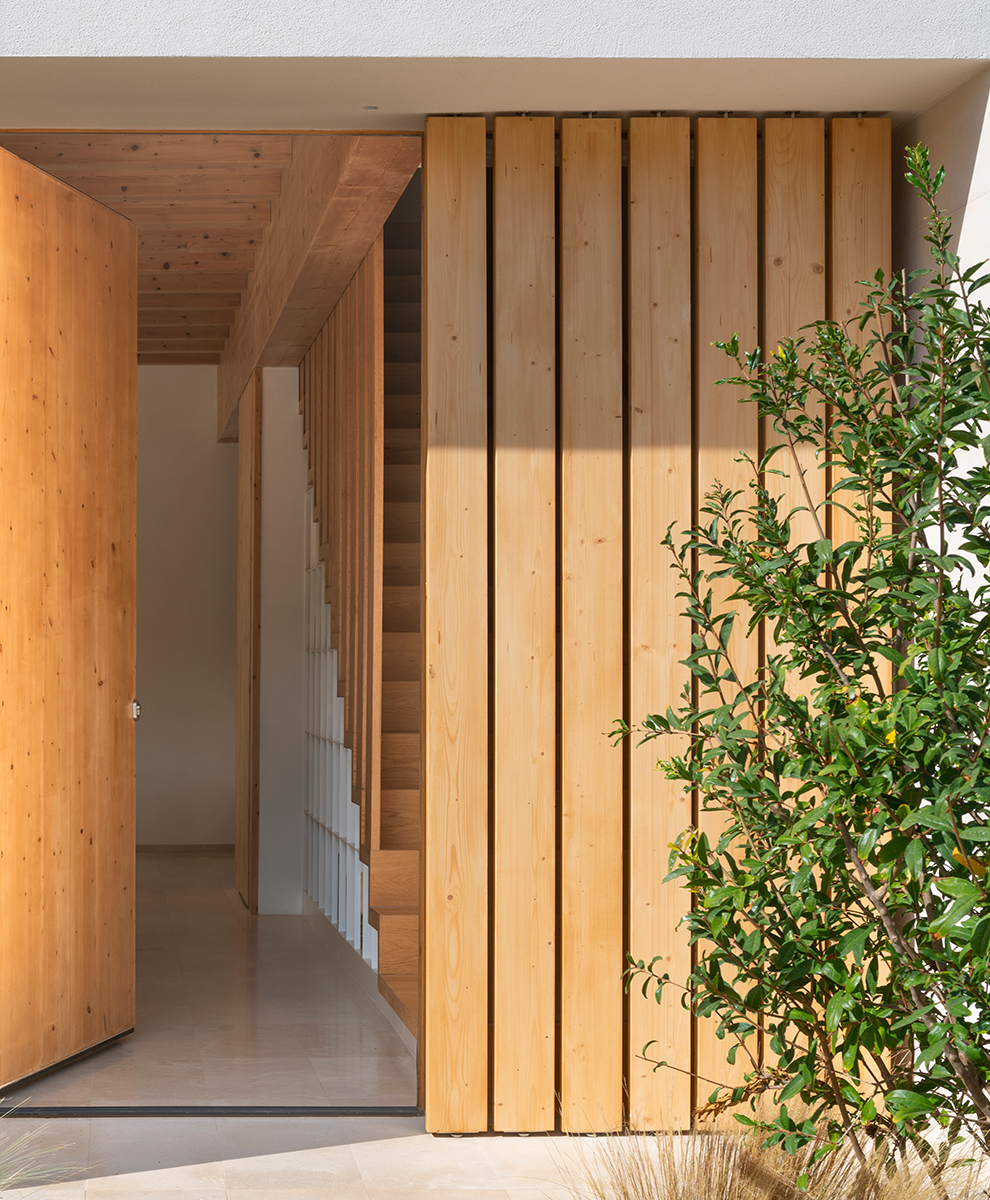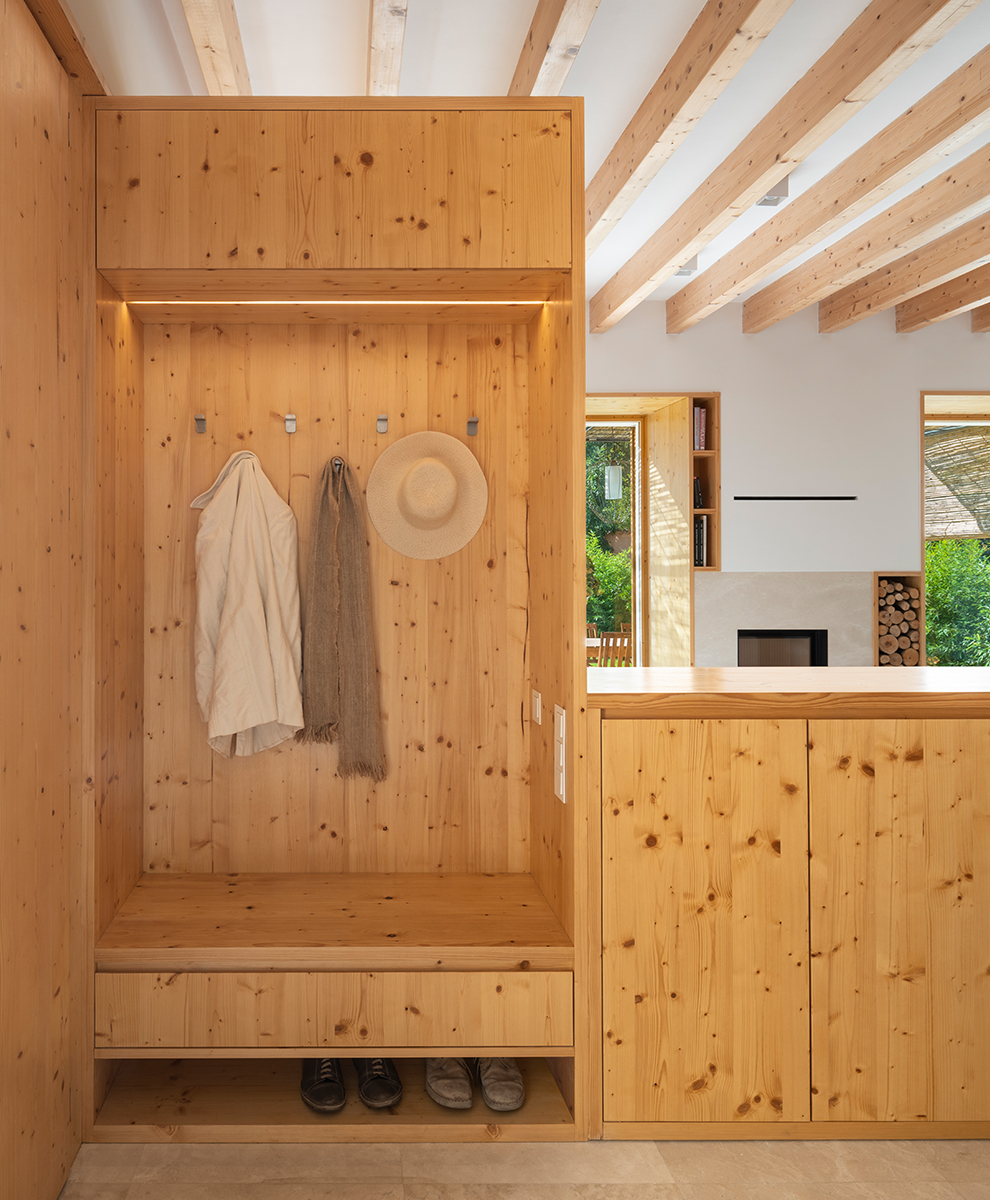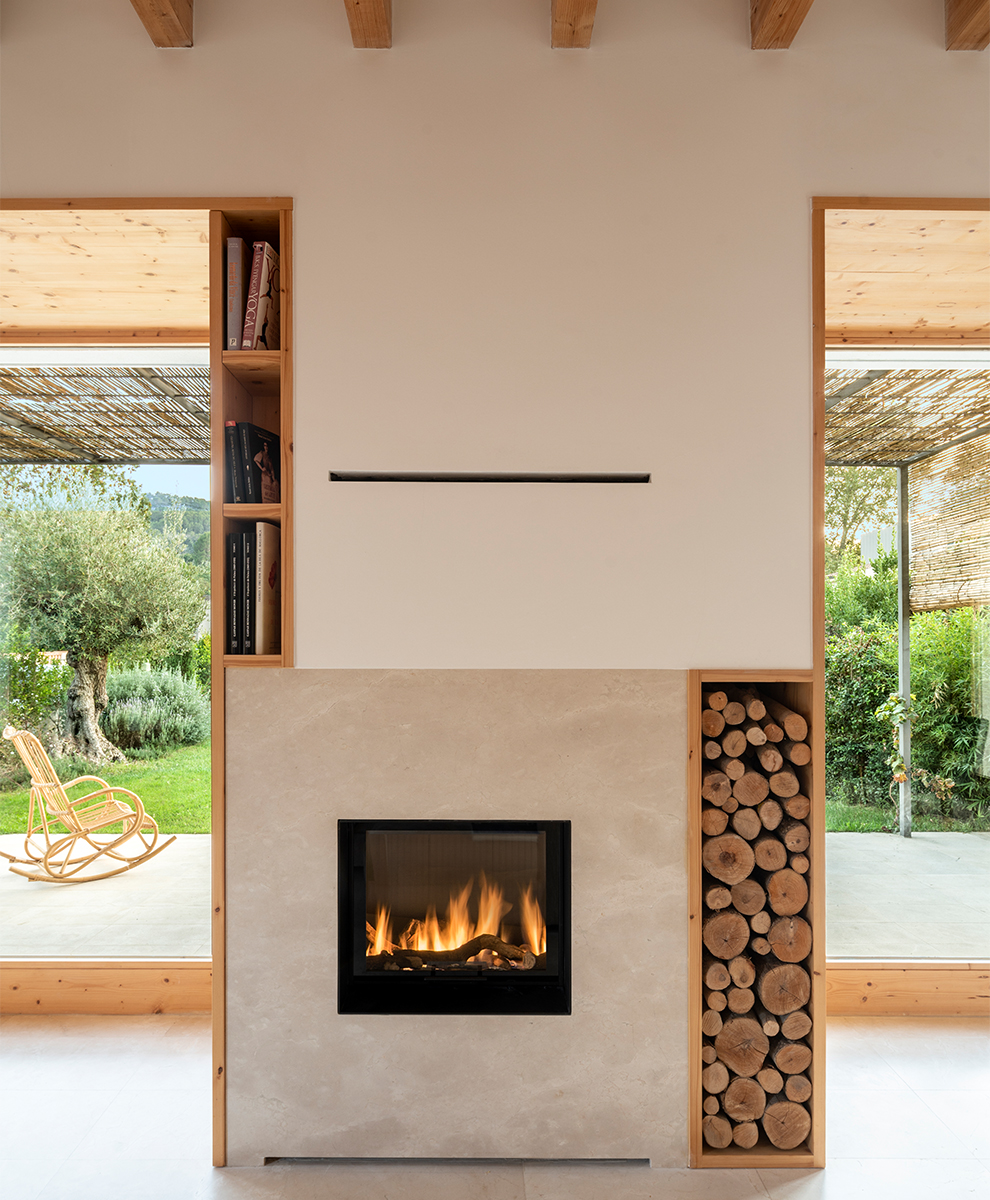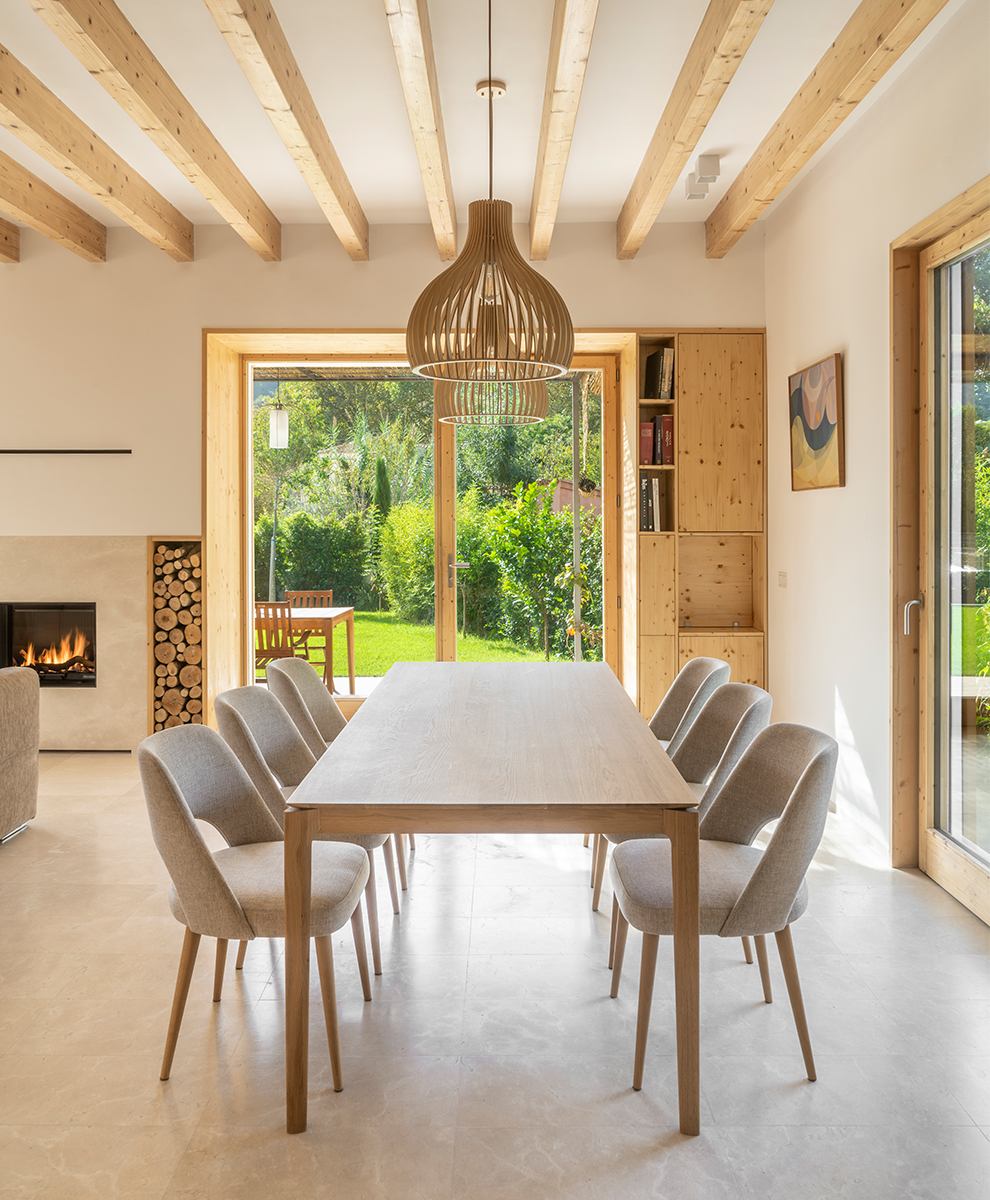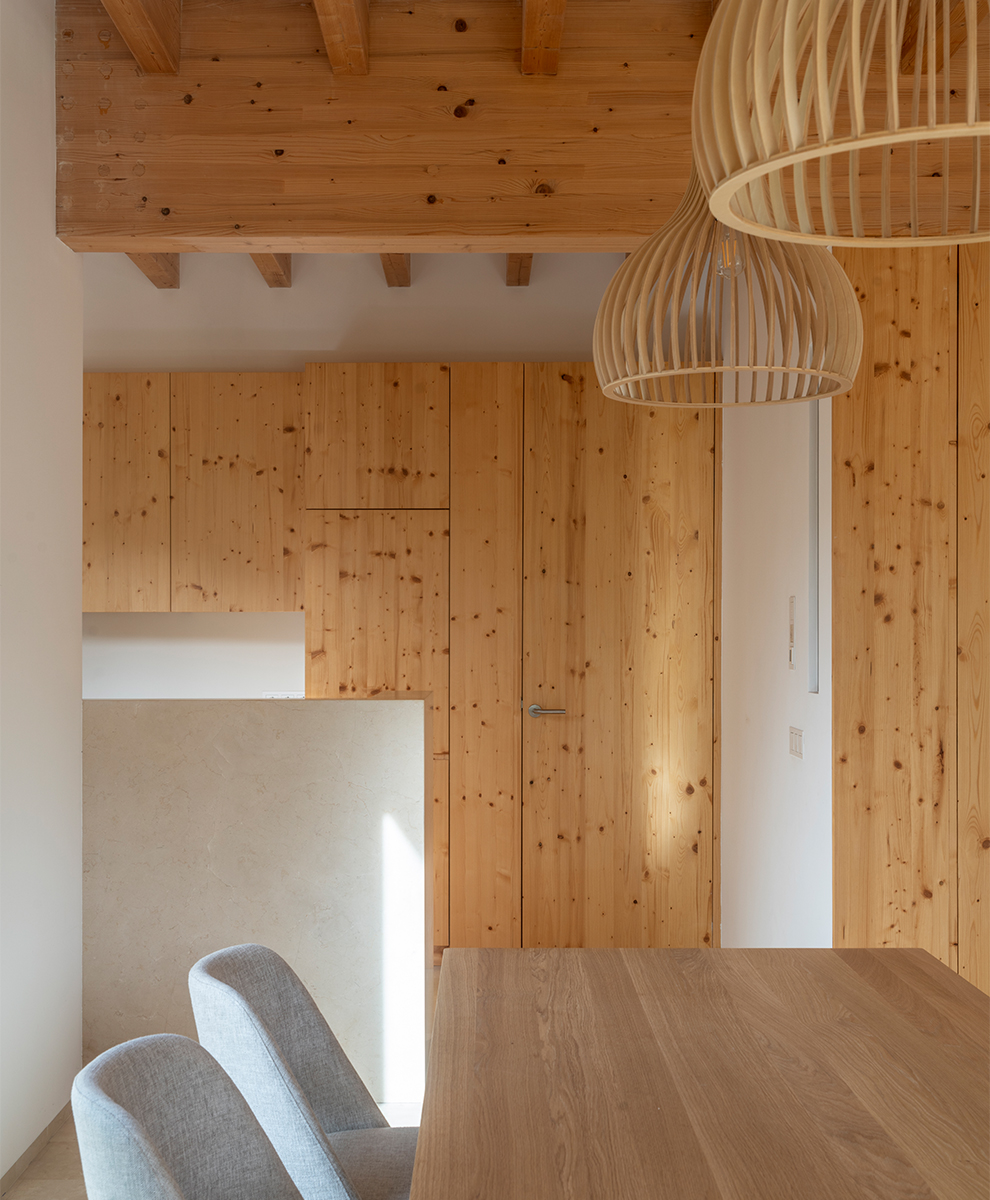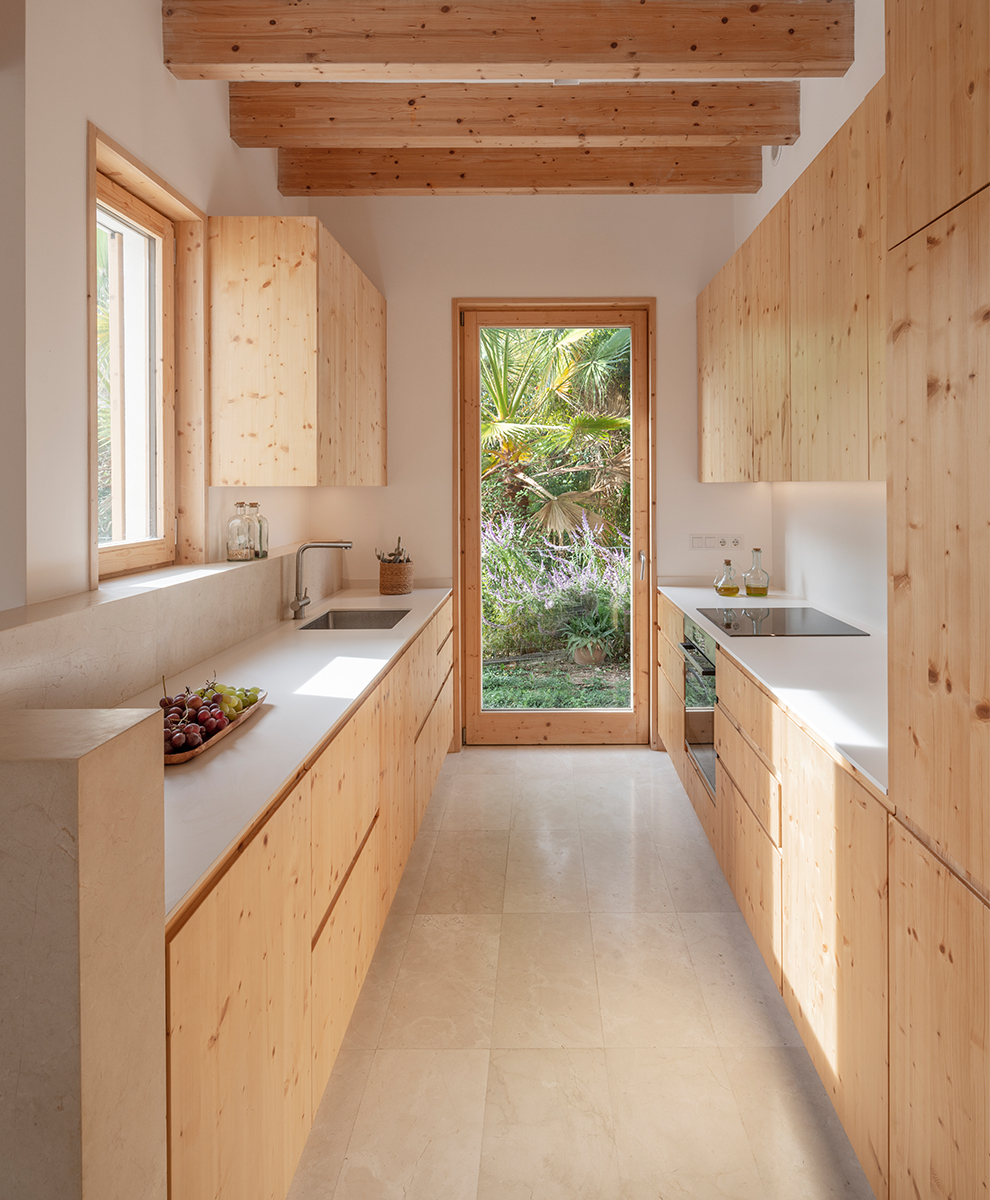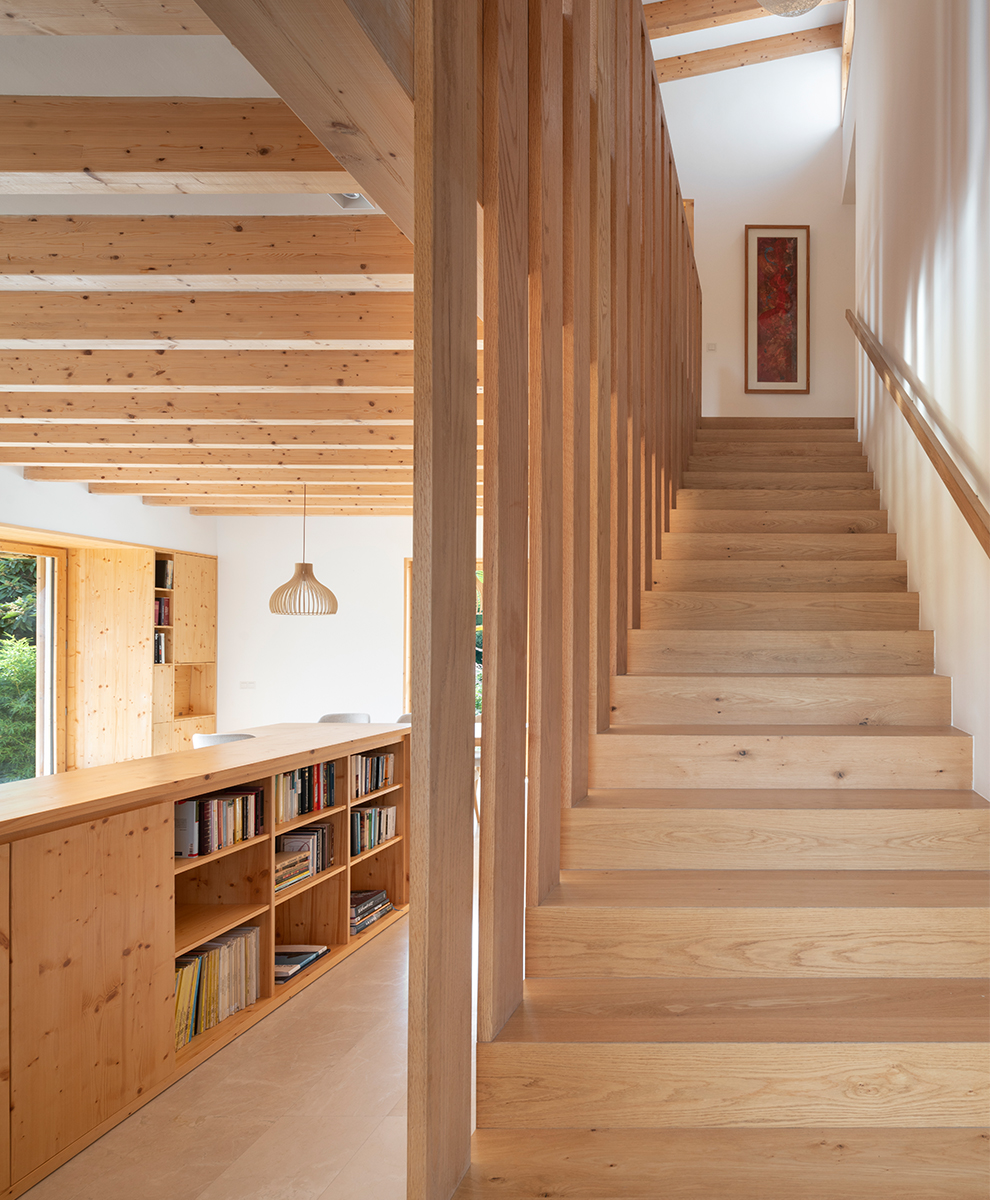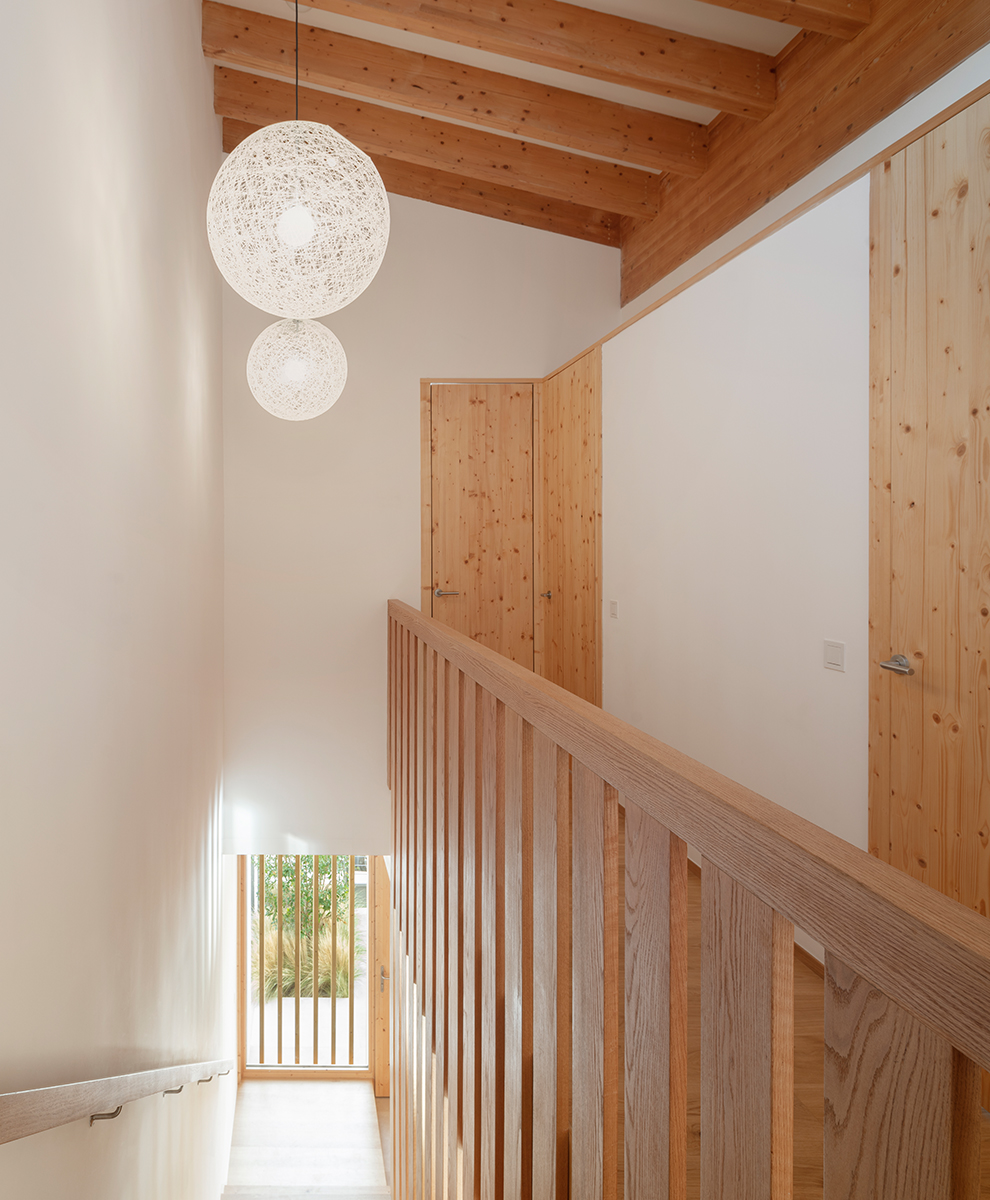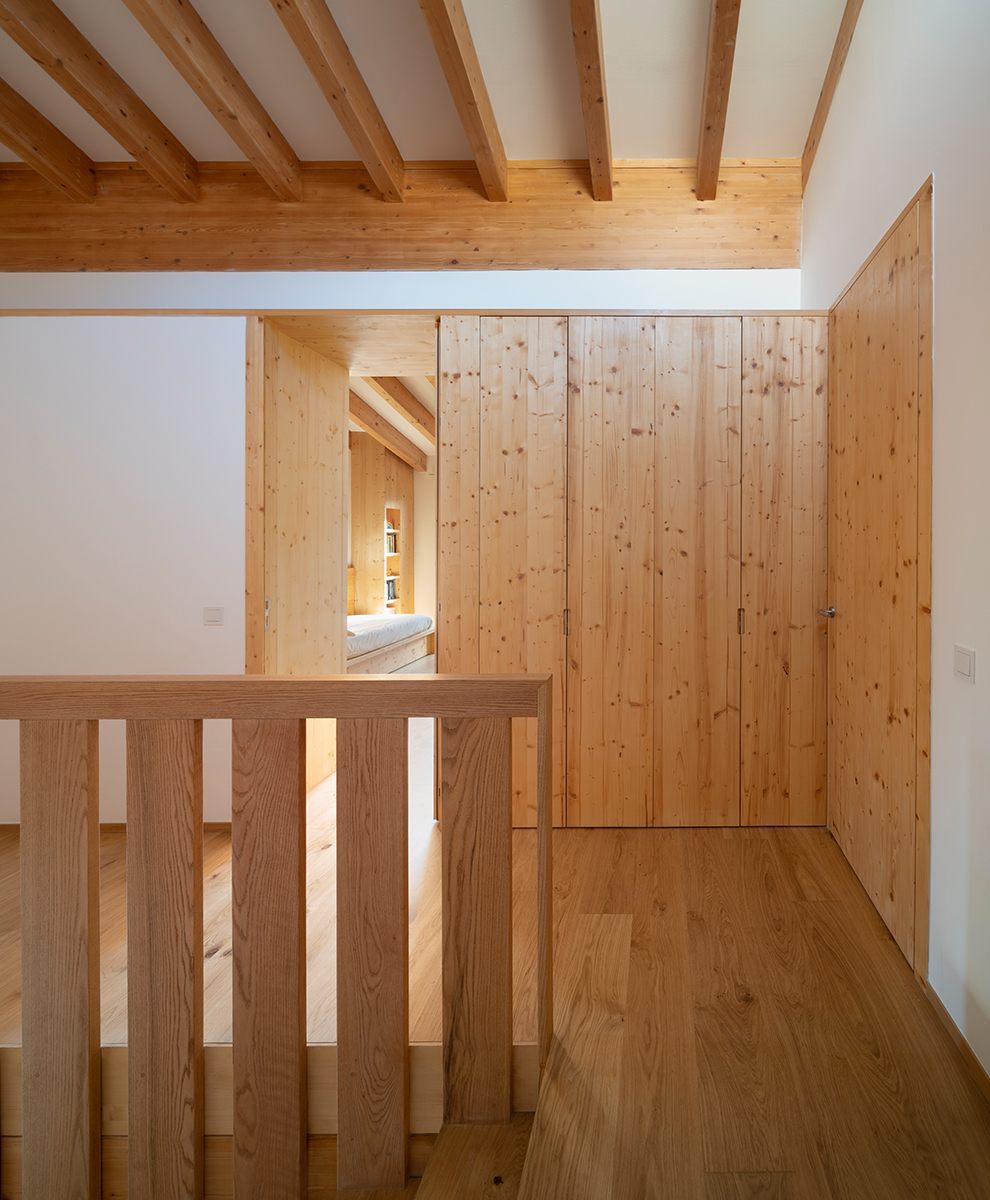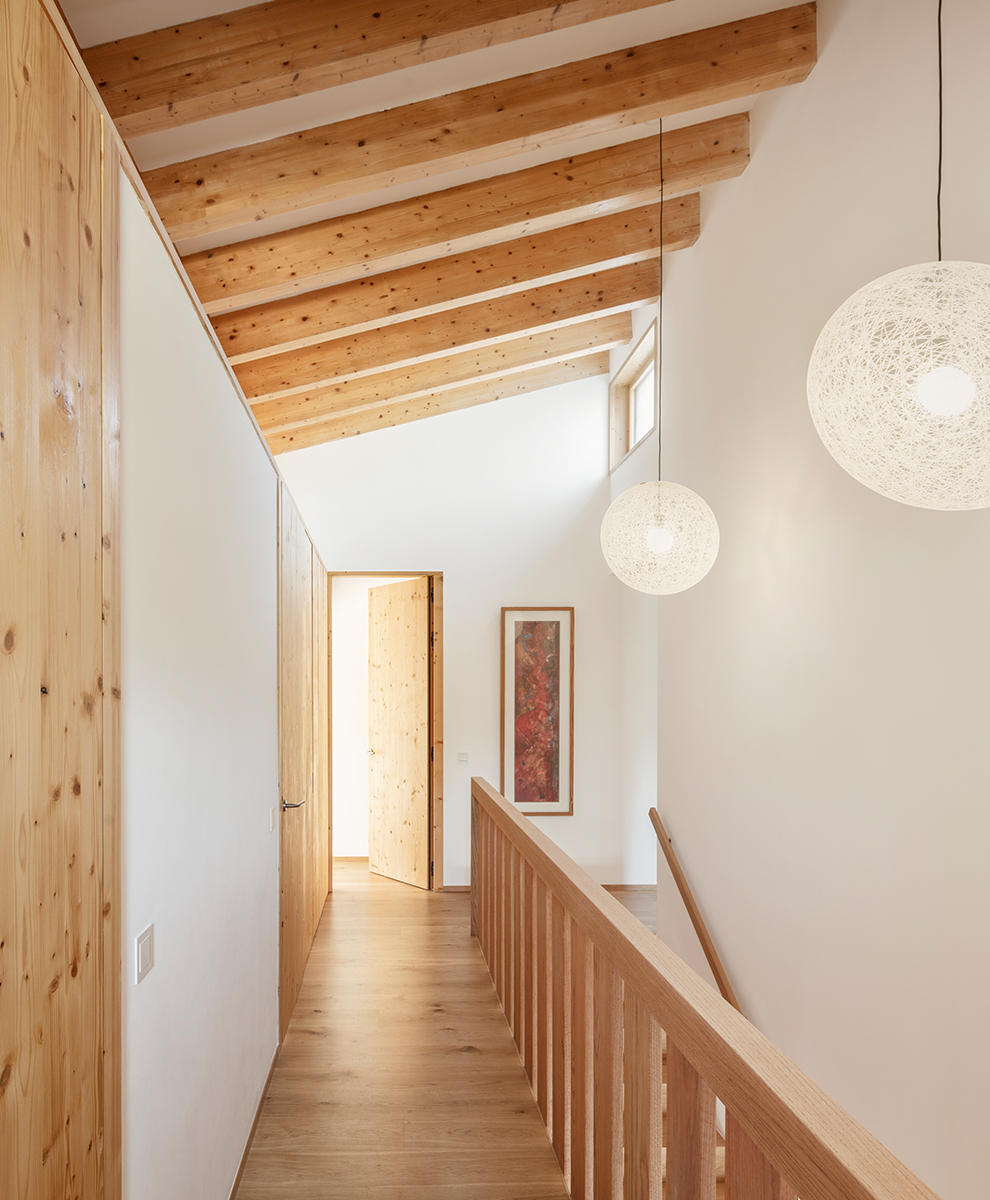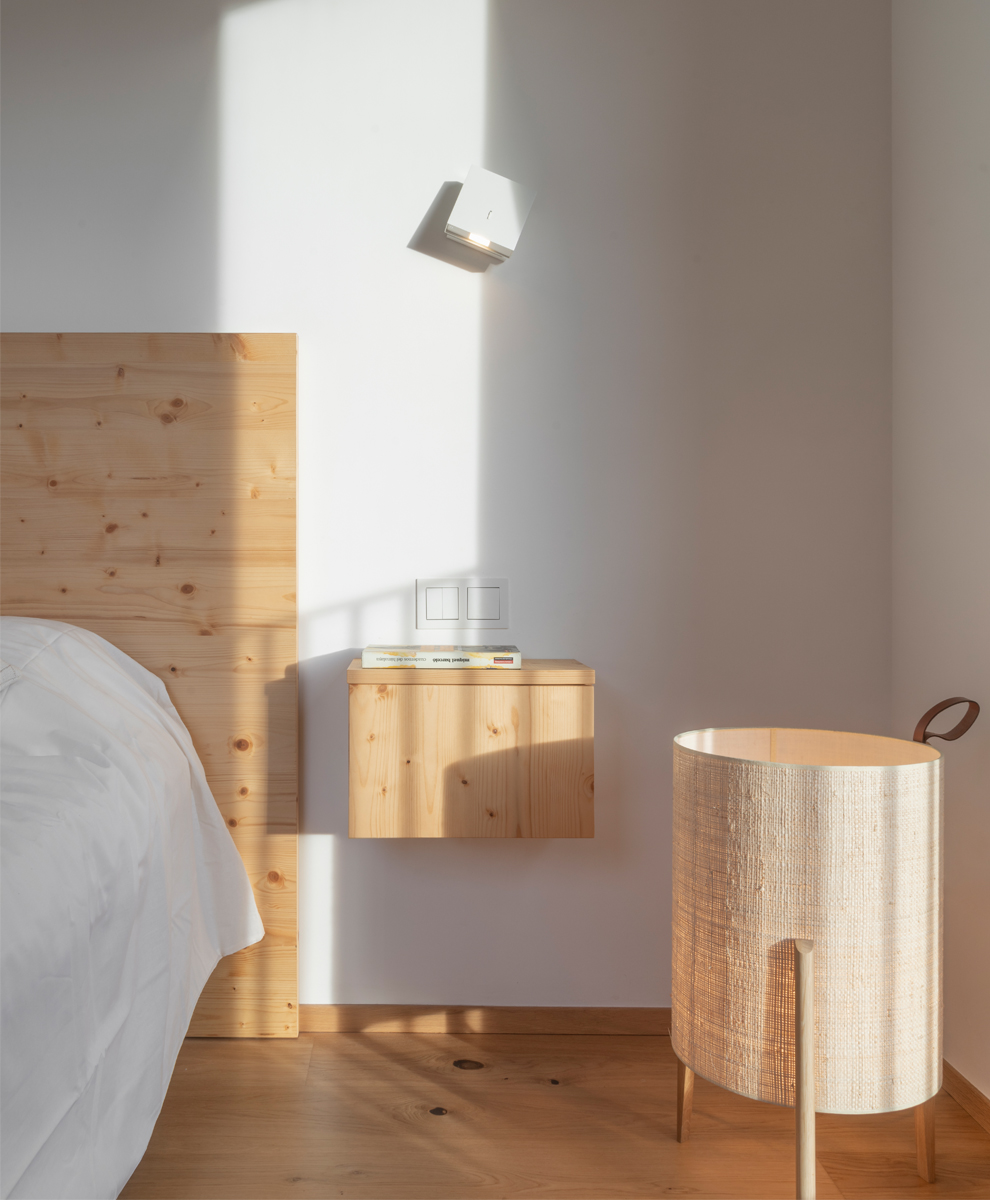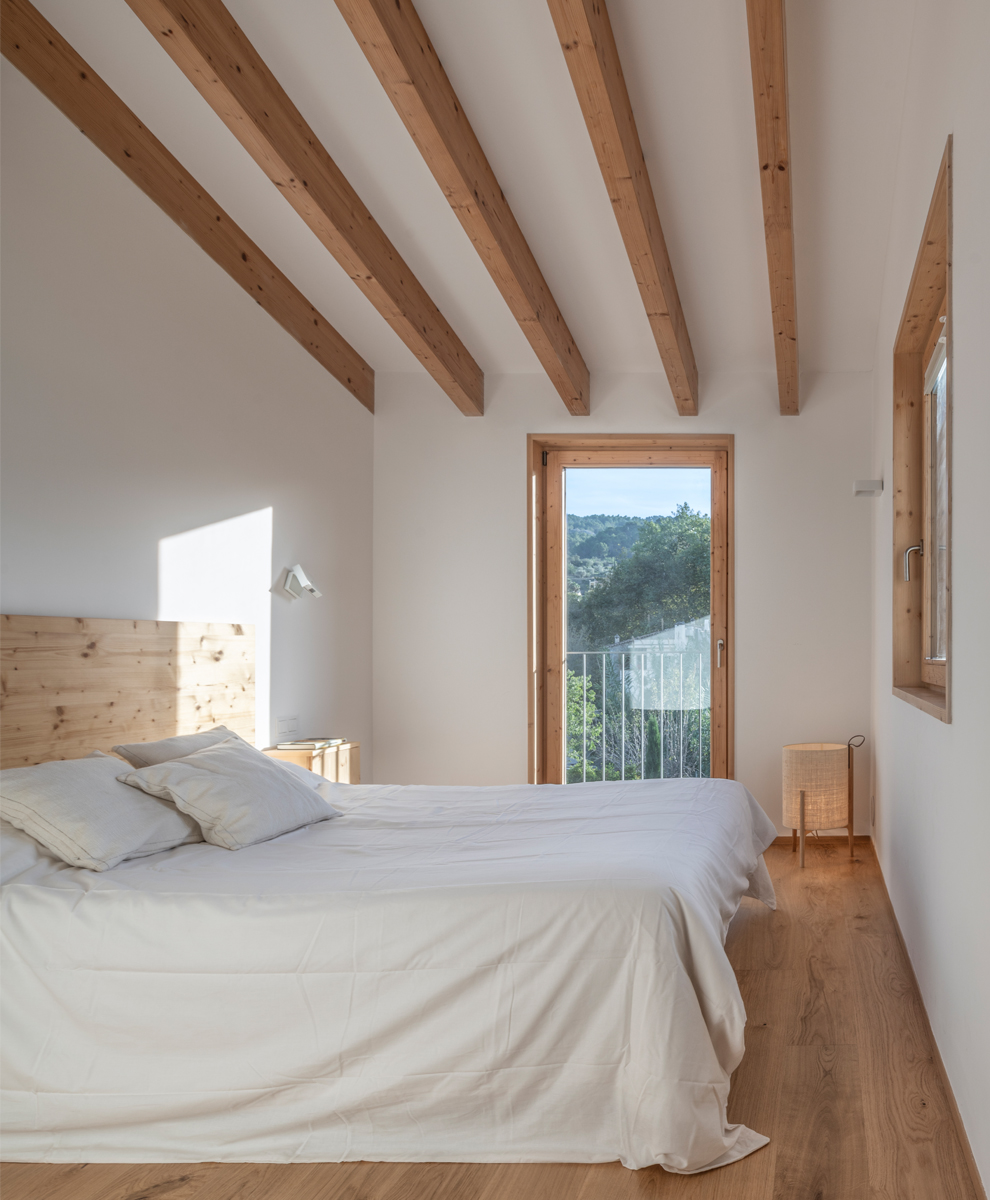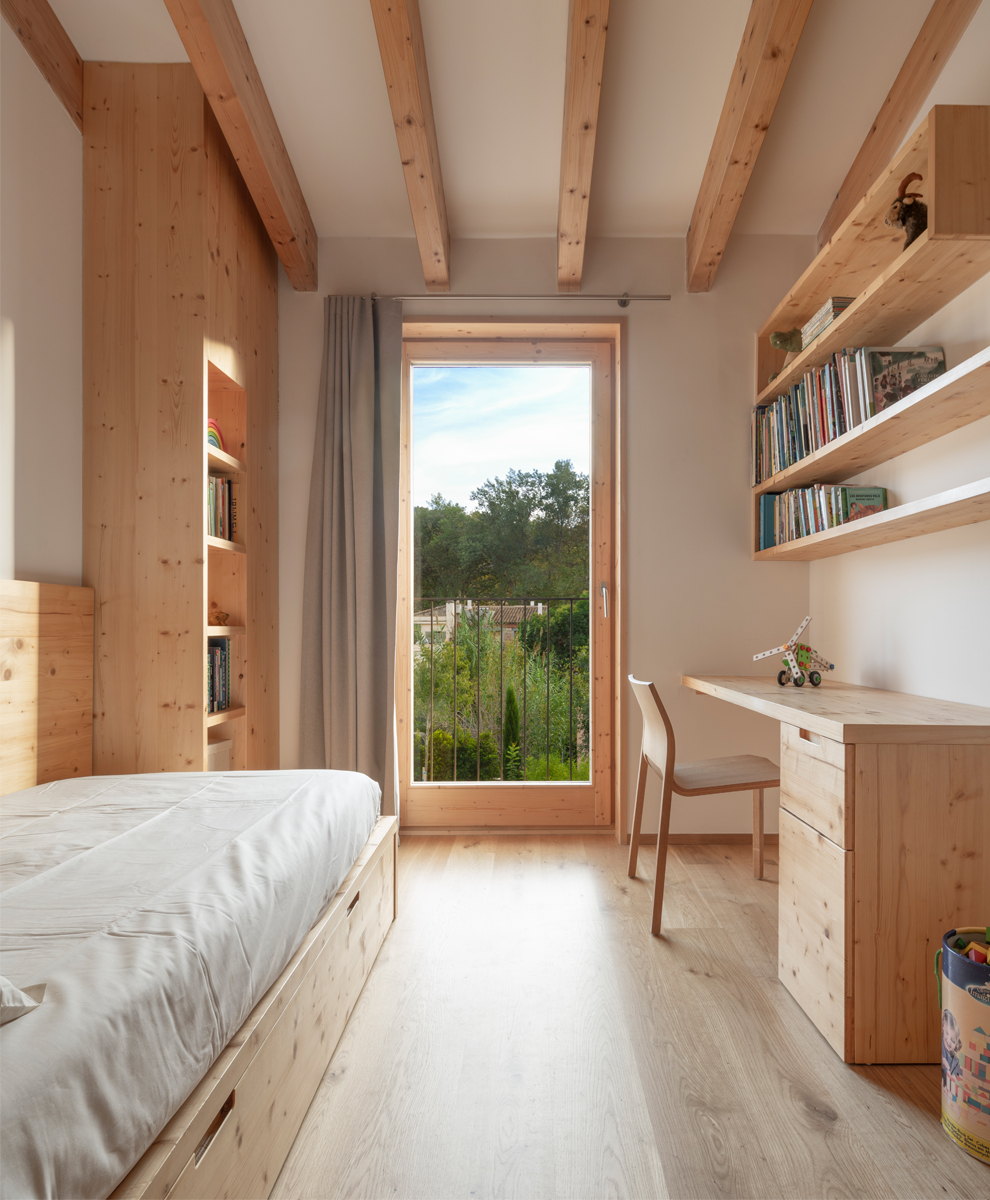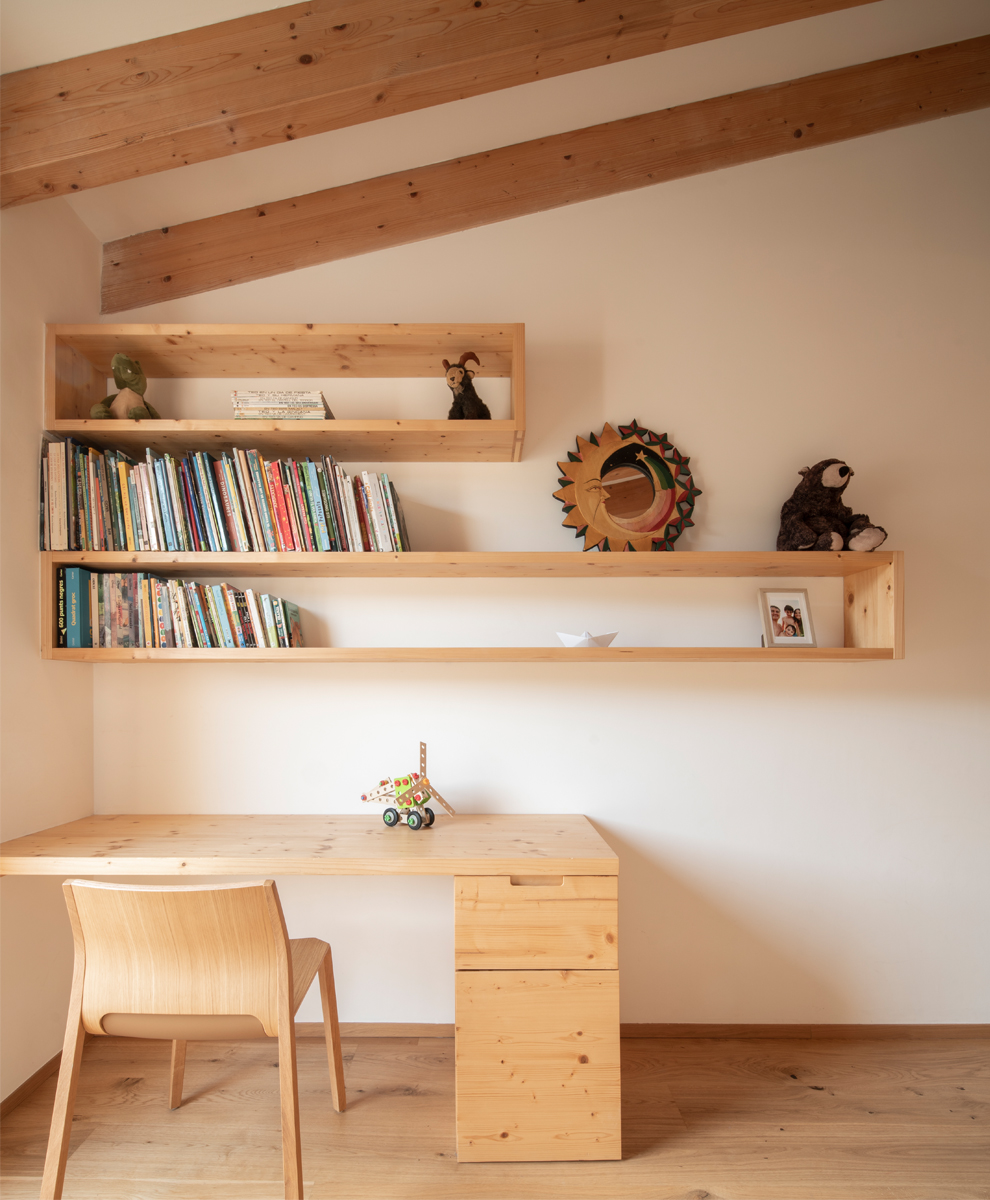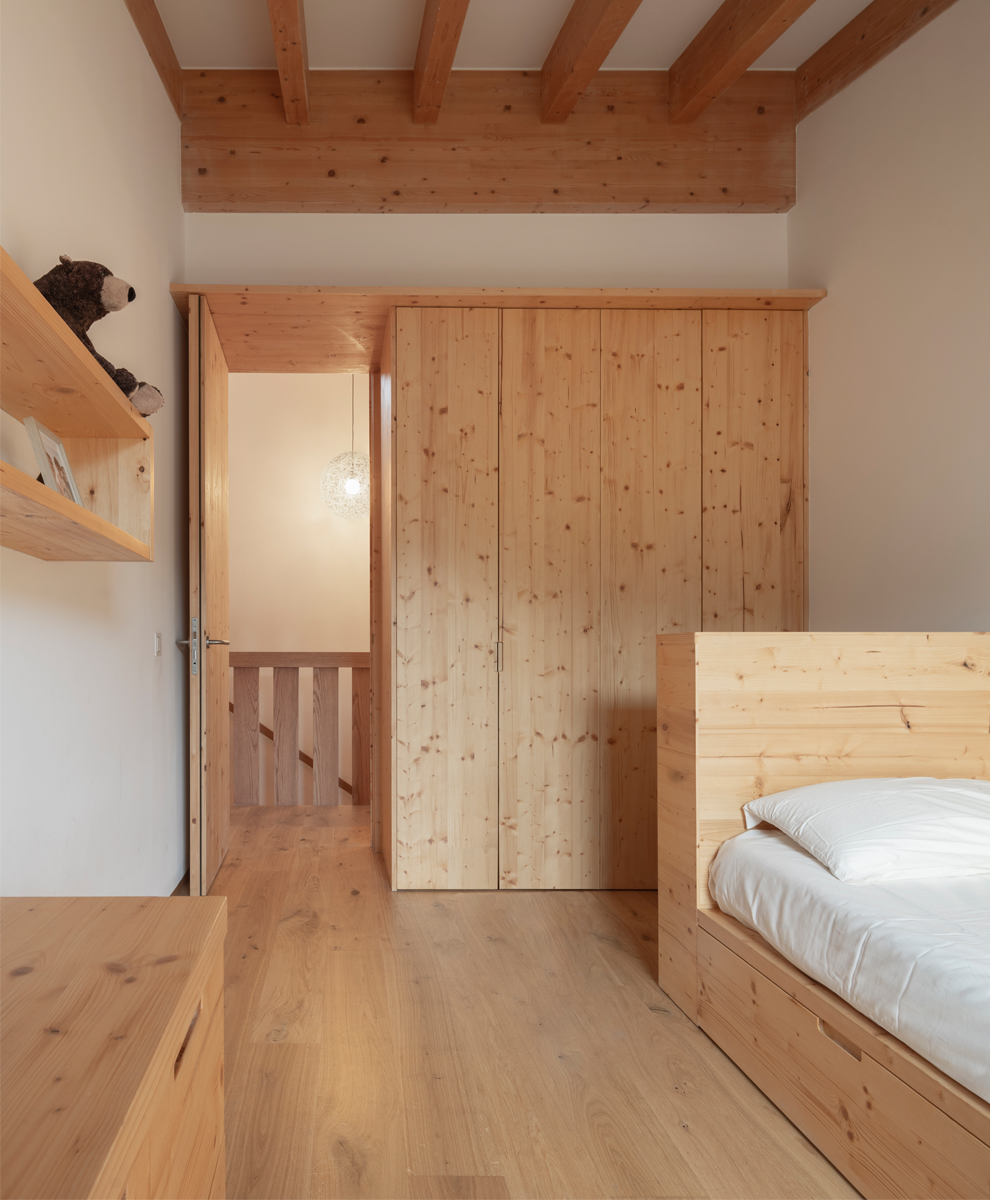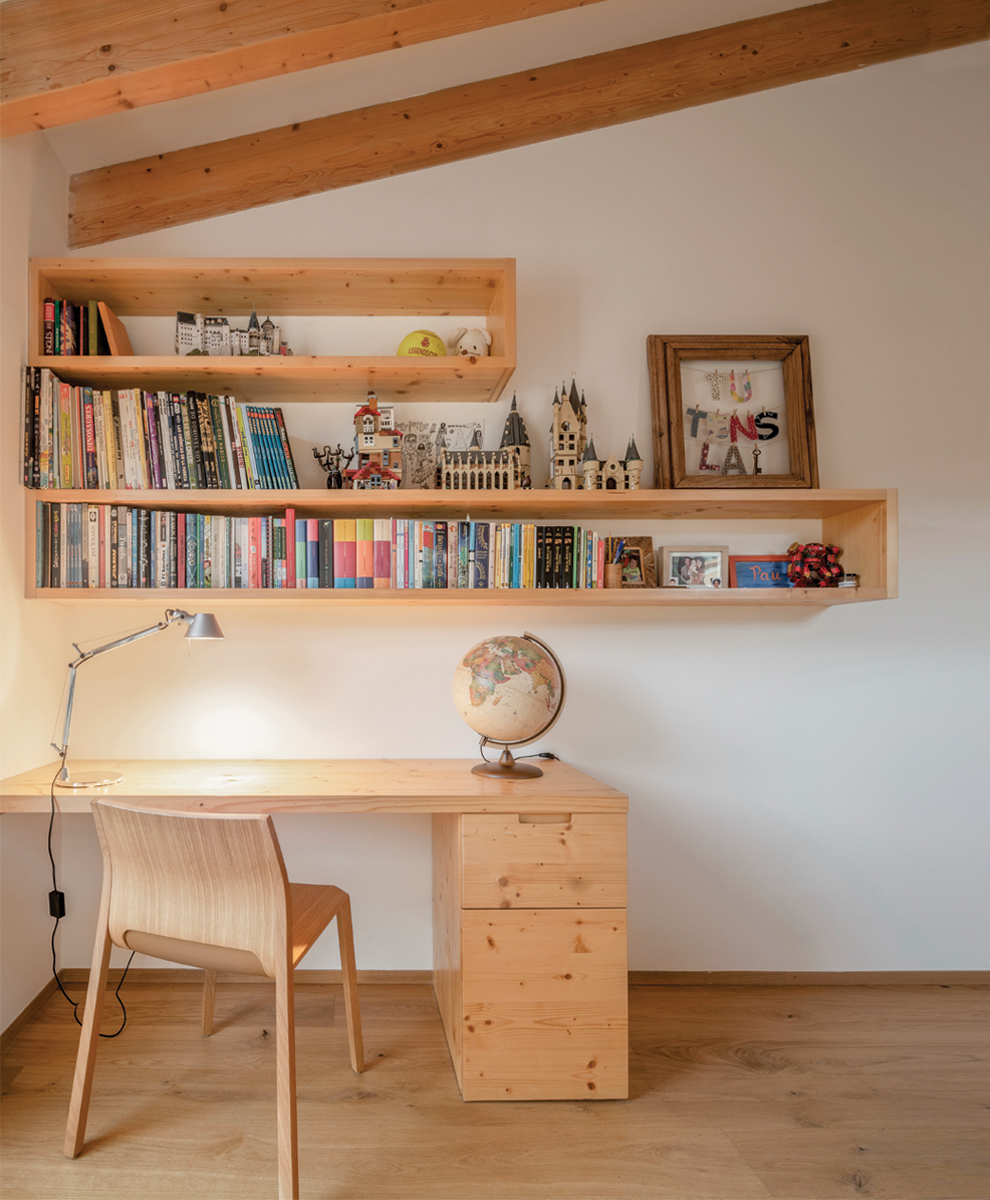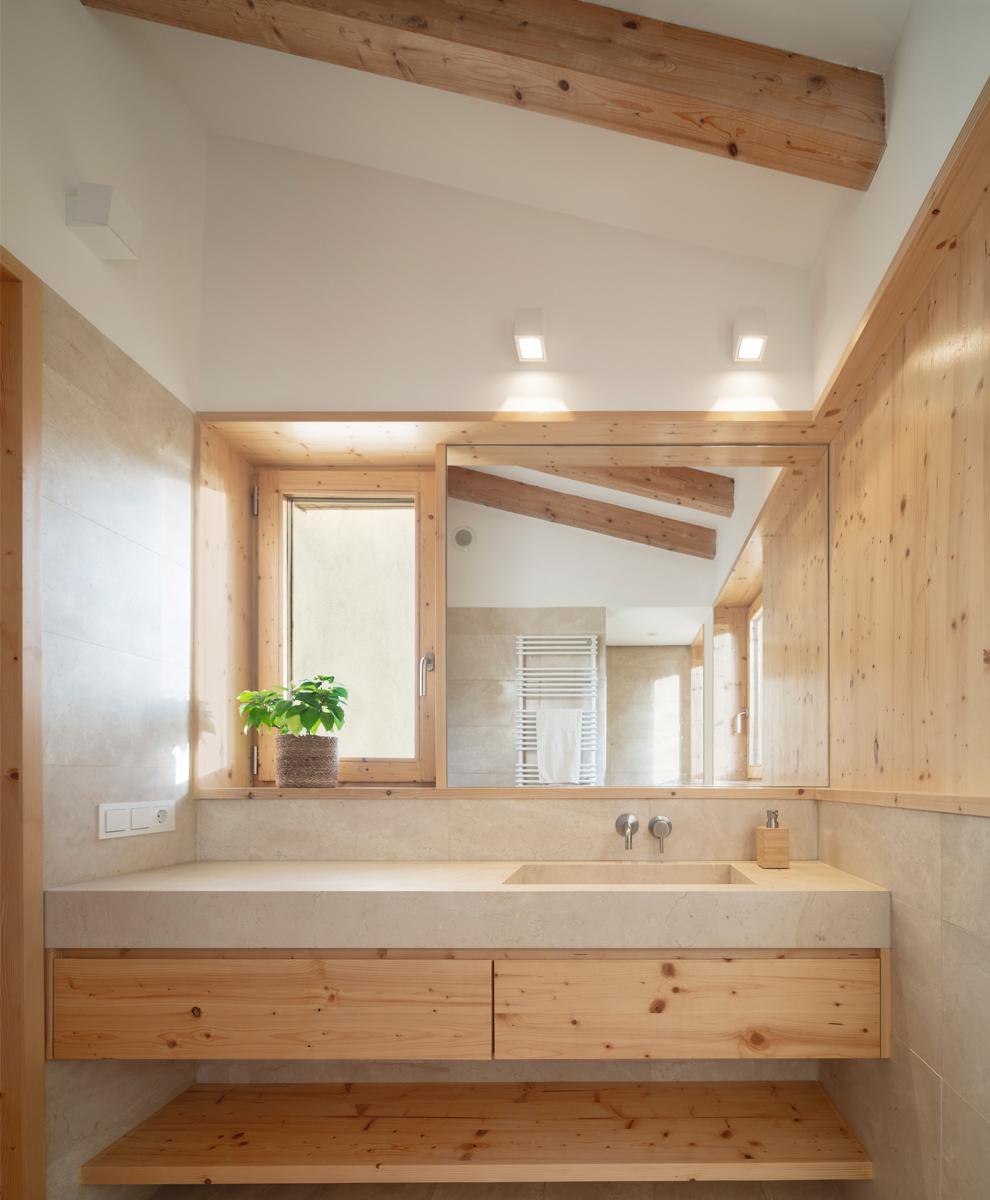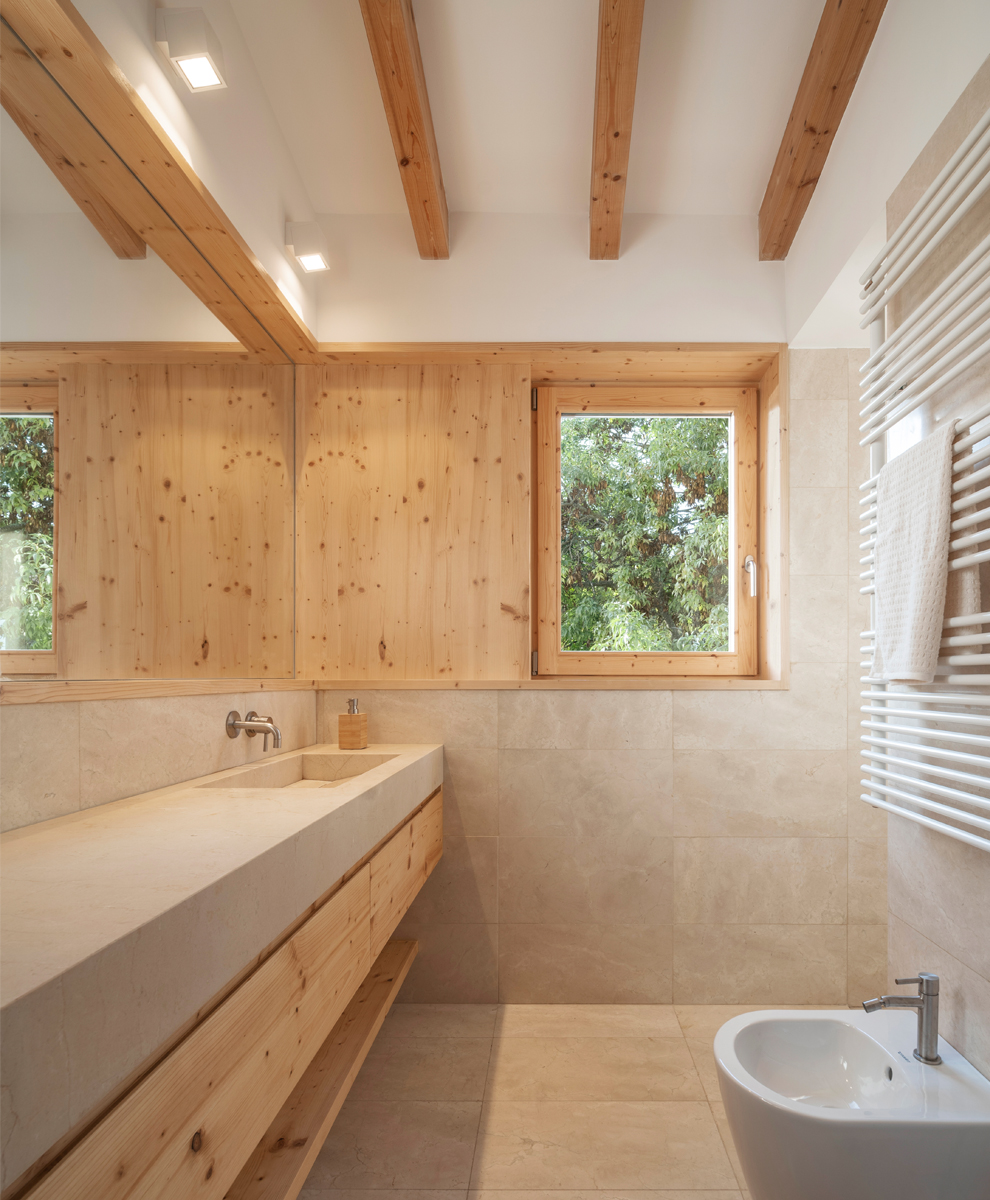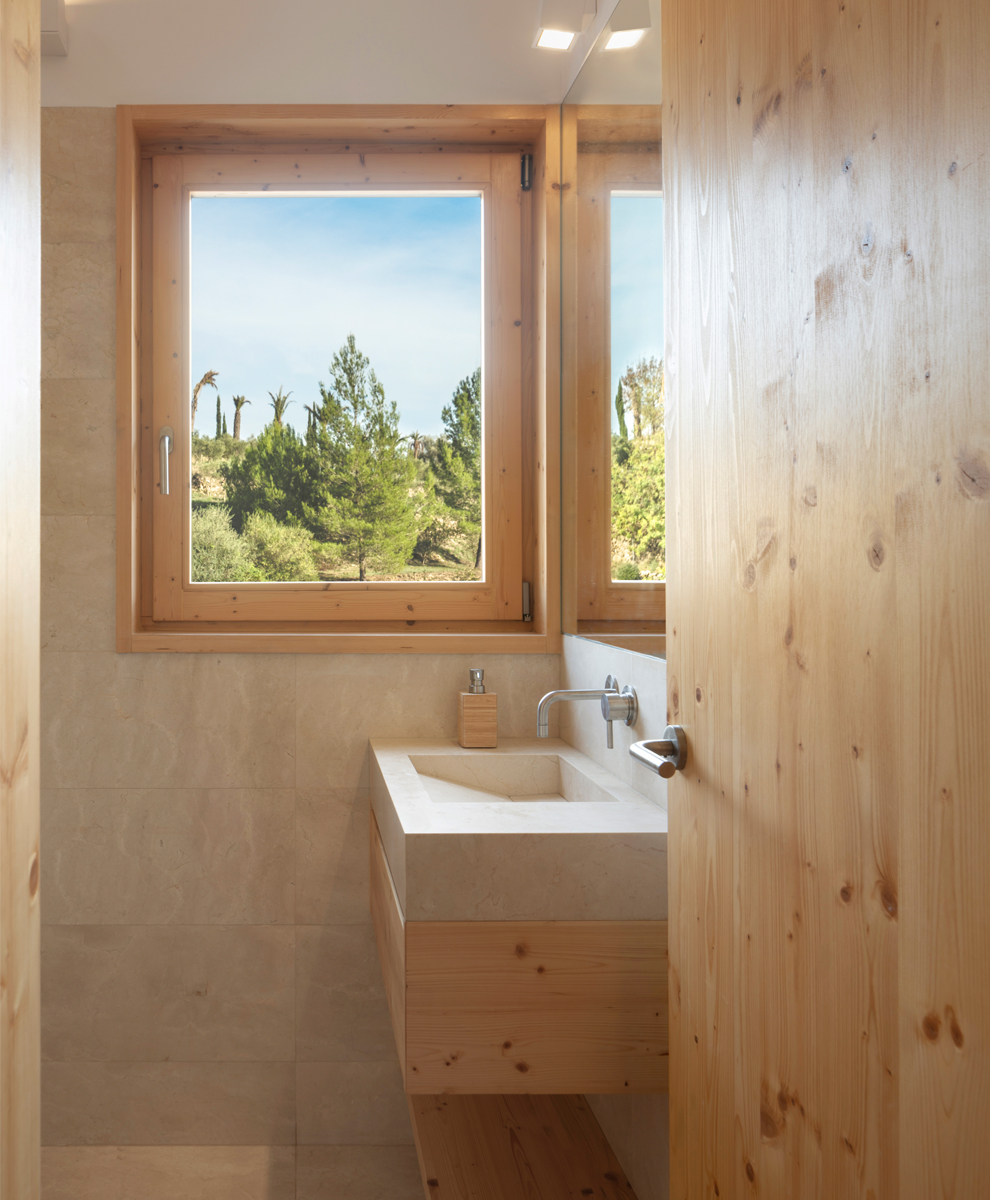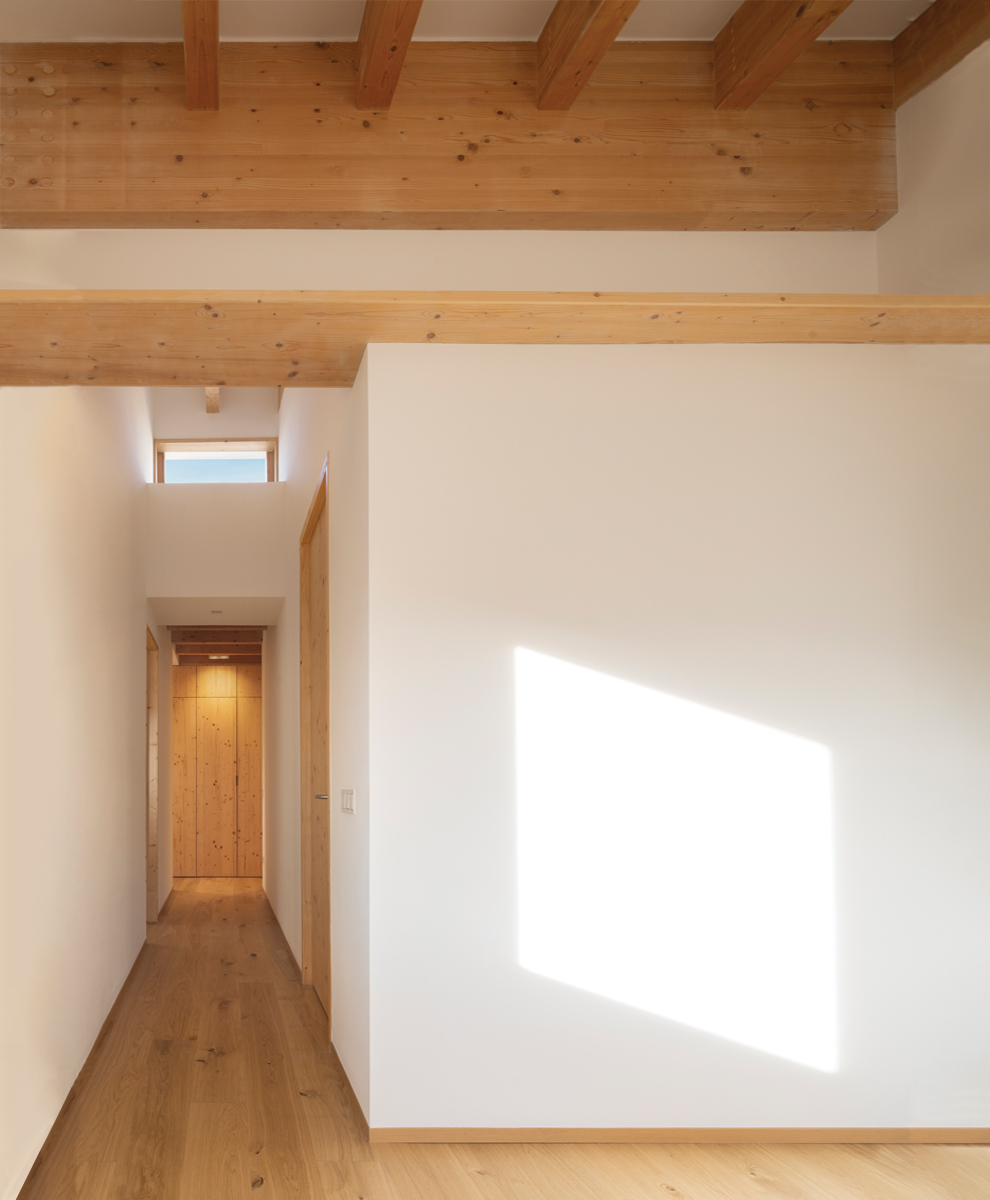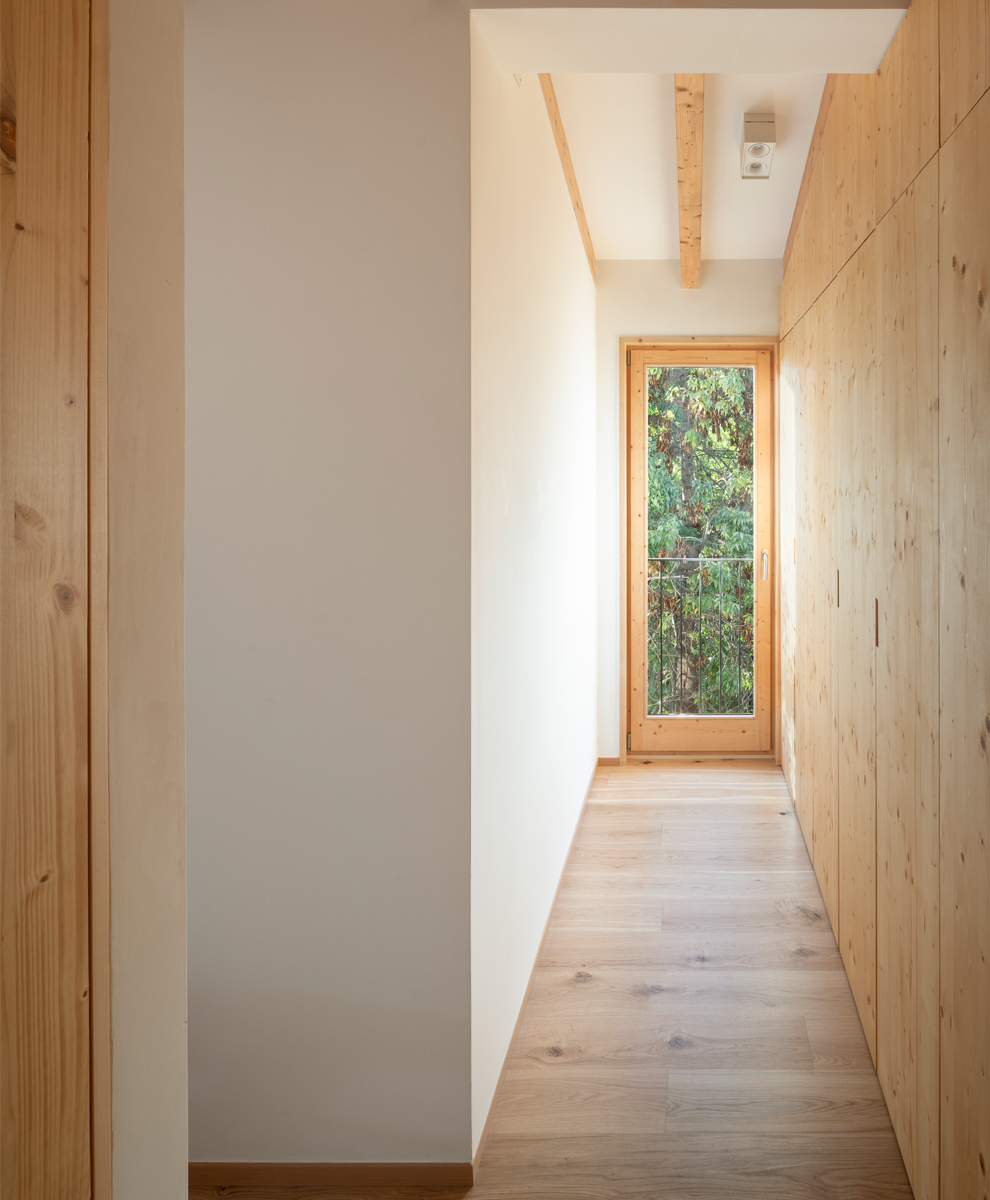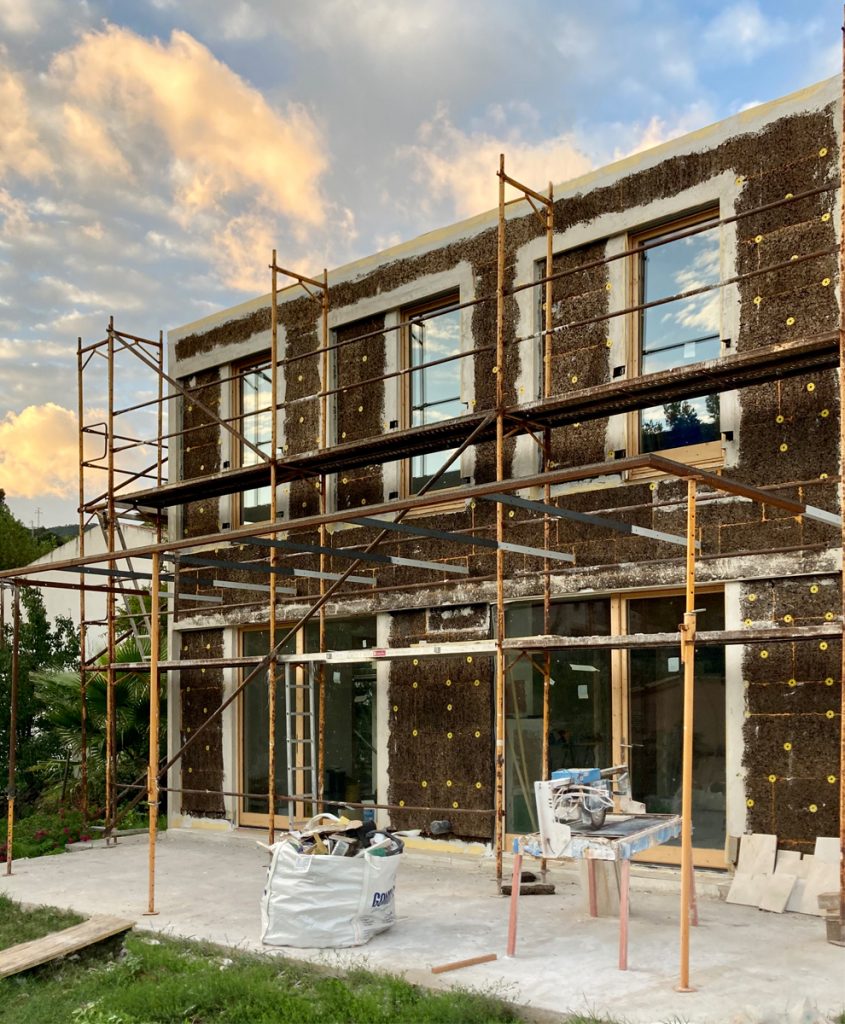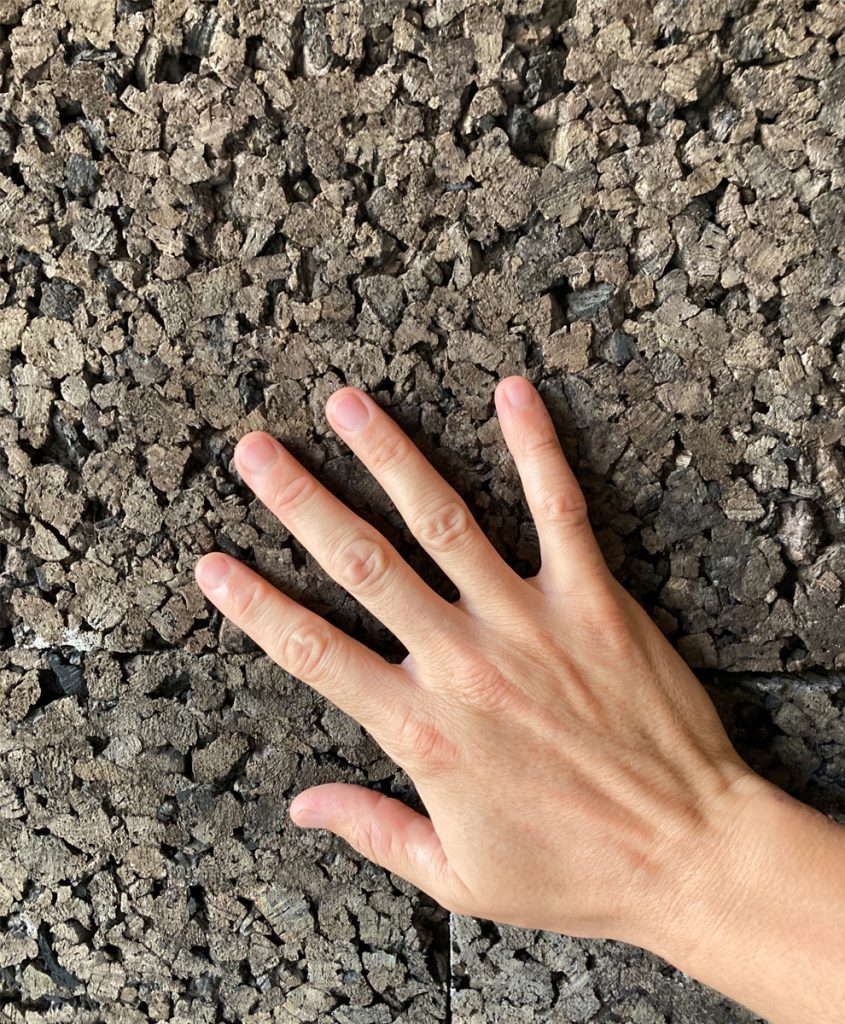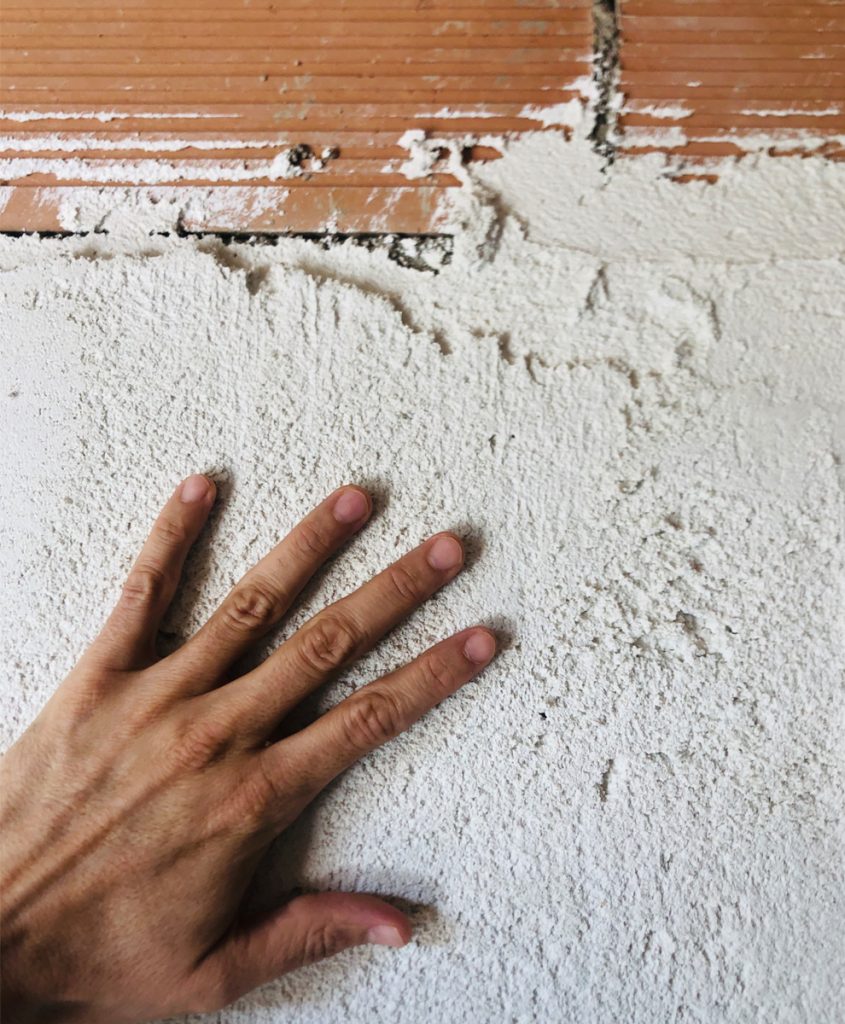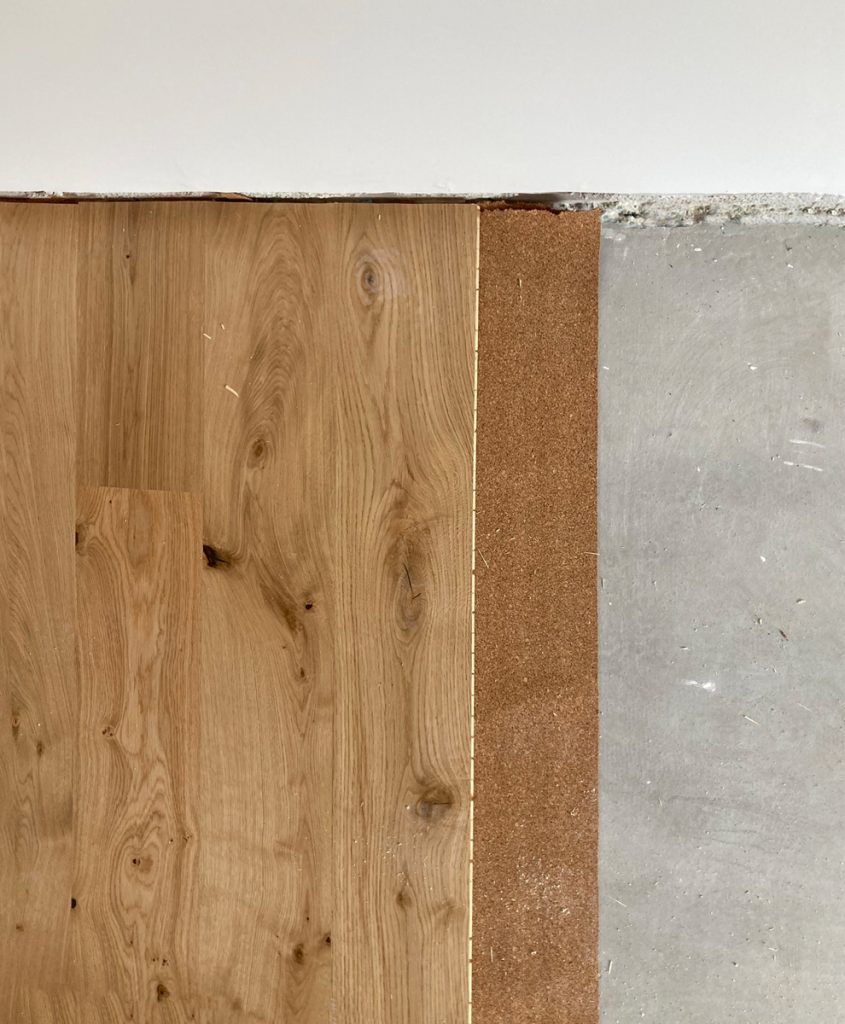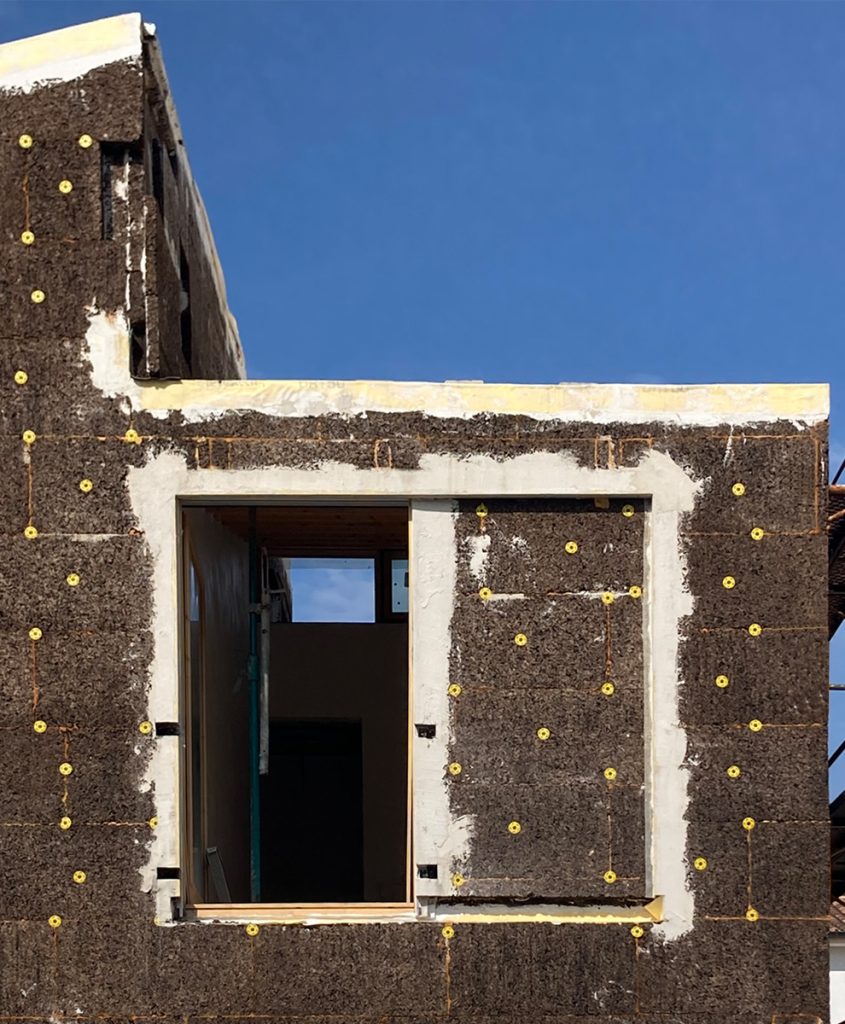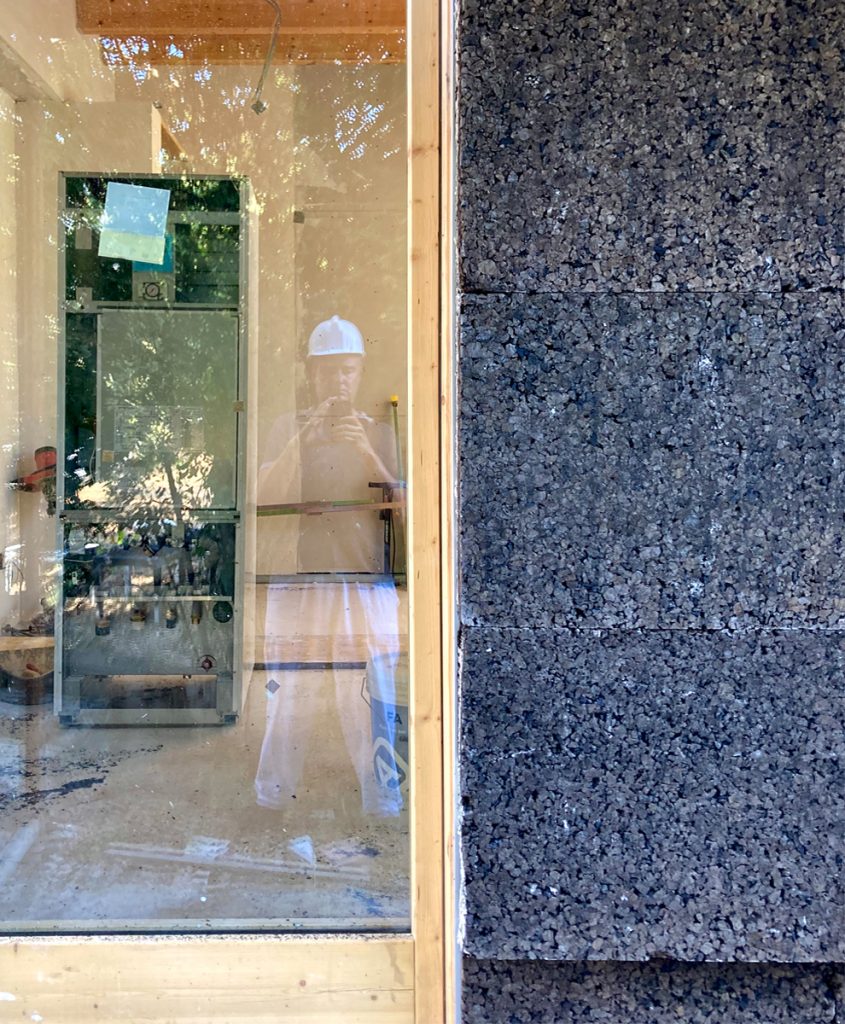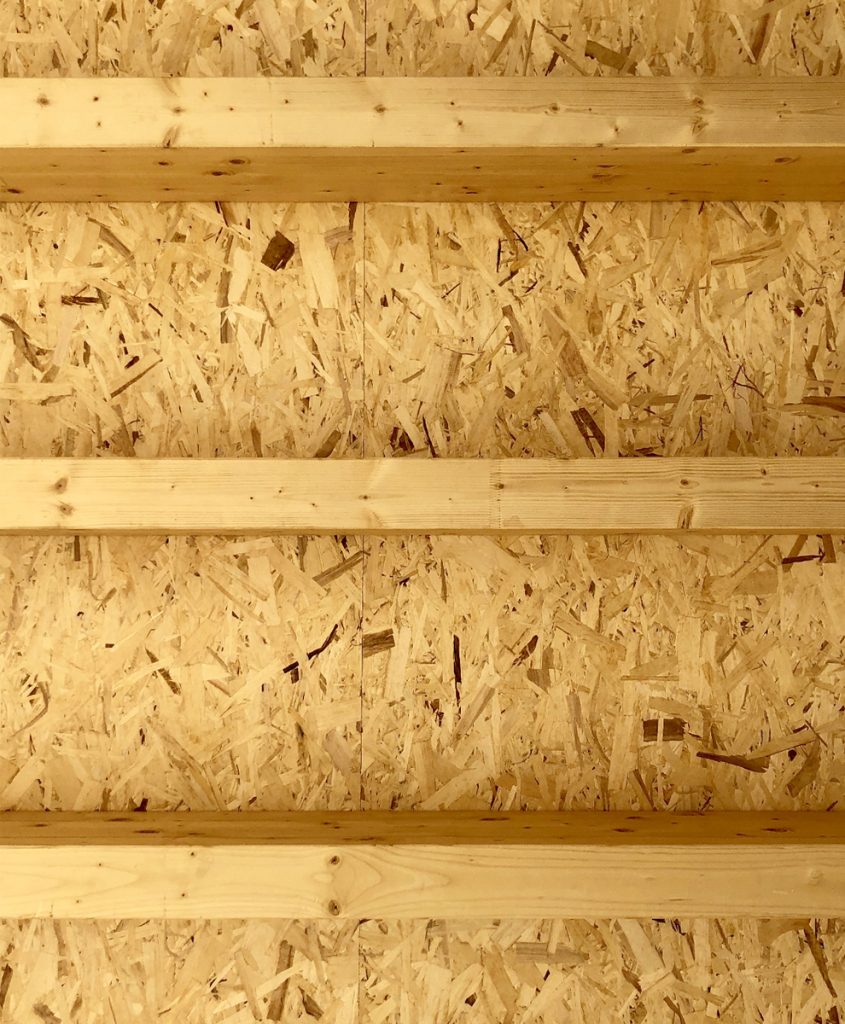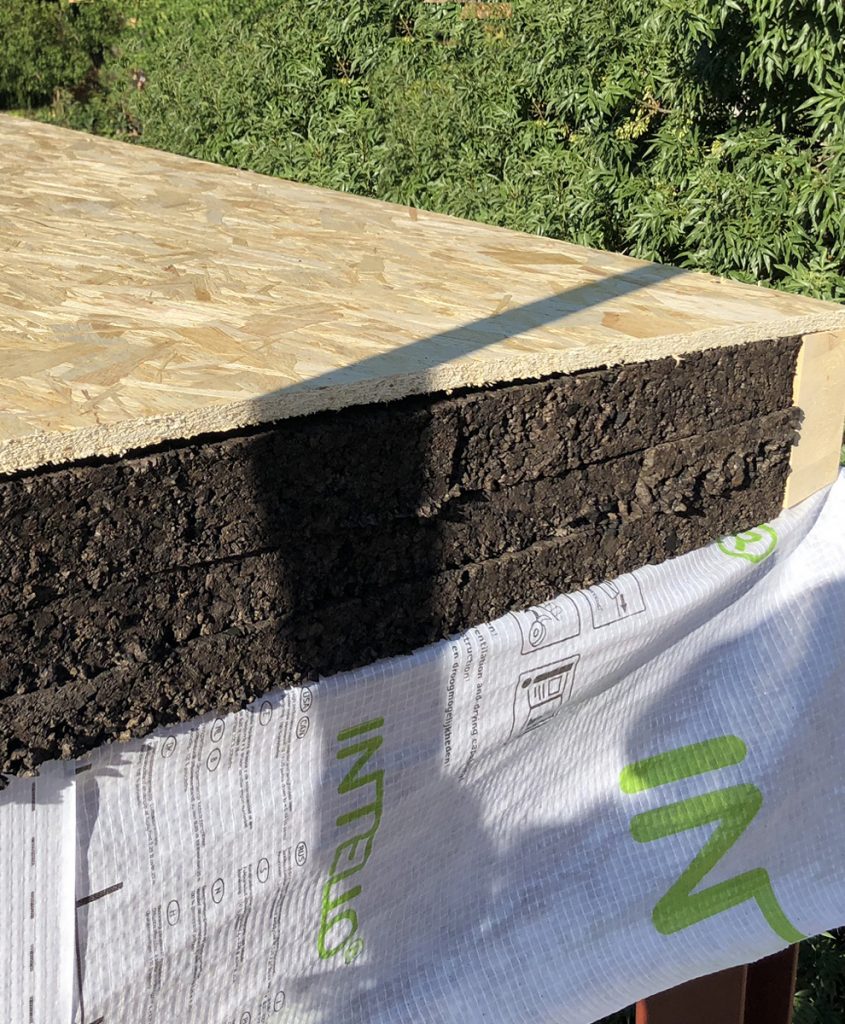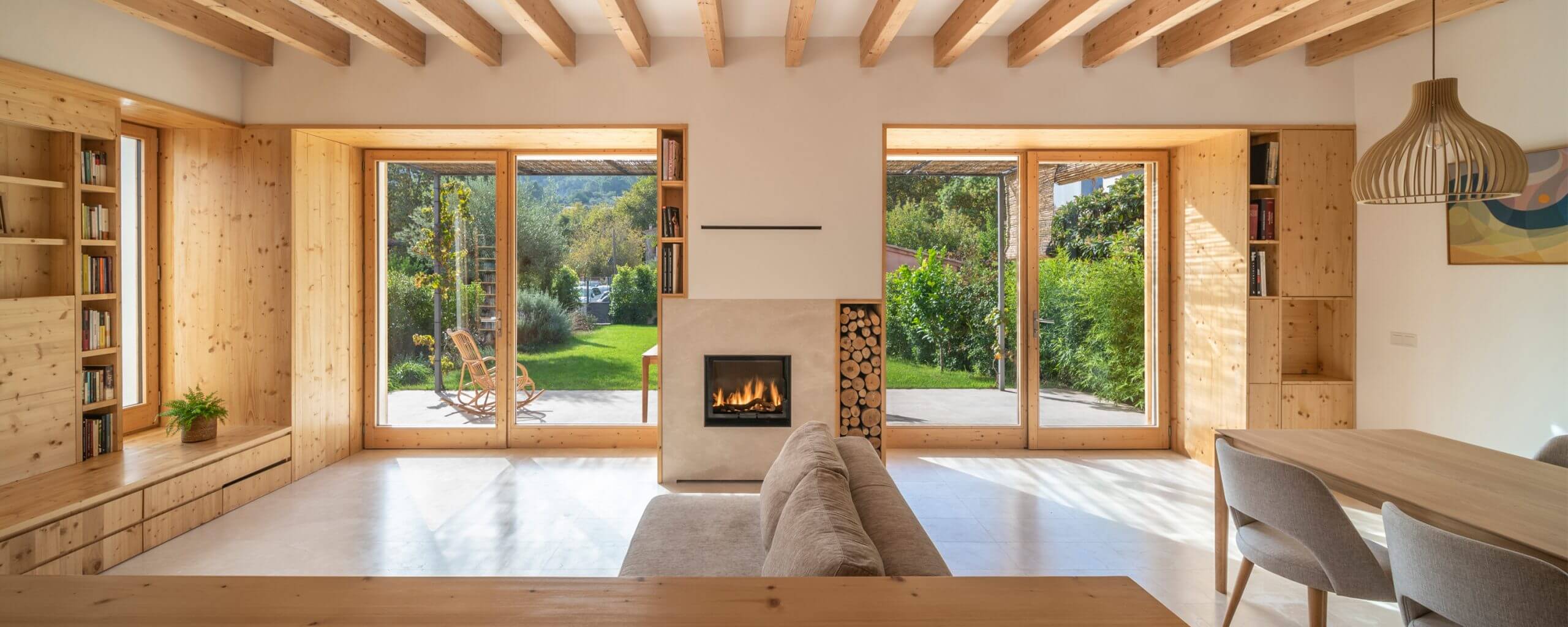
Location: Puigpunyent
Area: 215,60 m²
Project: 2017
Completion of work: 2022
Nominated for the 2024 archdaily awards, “Building of the year 2024”
Nominated for the 2024 Archdaily awards, “Obra del año 2024” in Spain and Latin-American countries
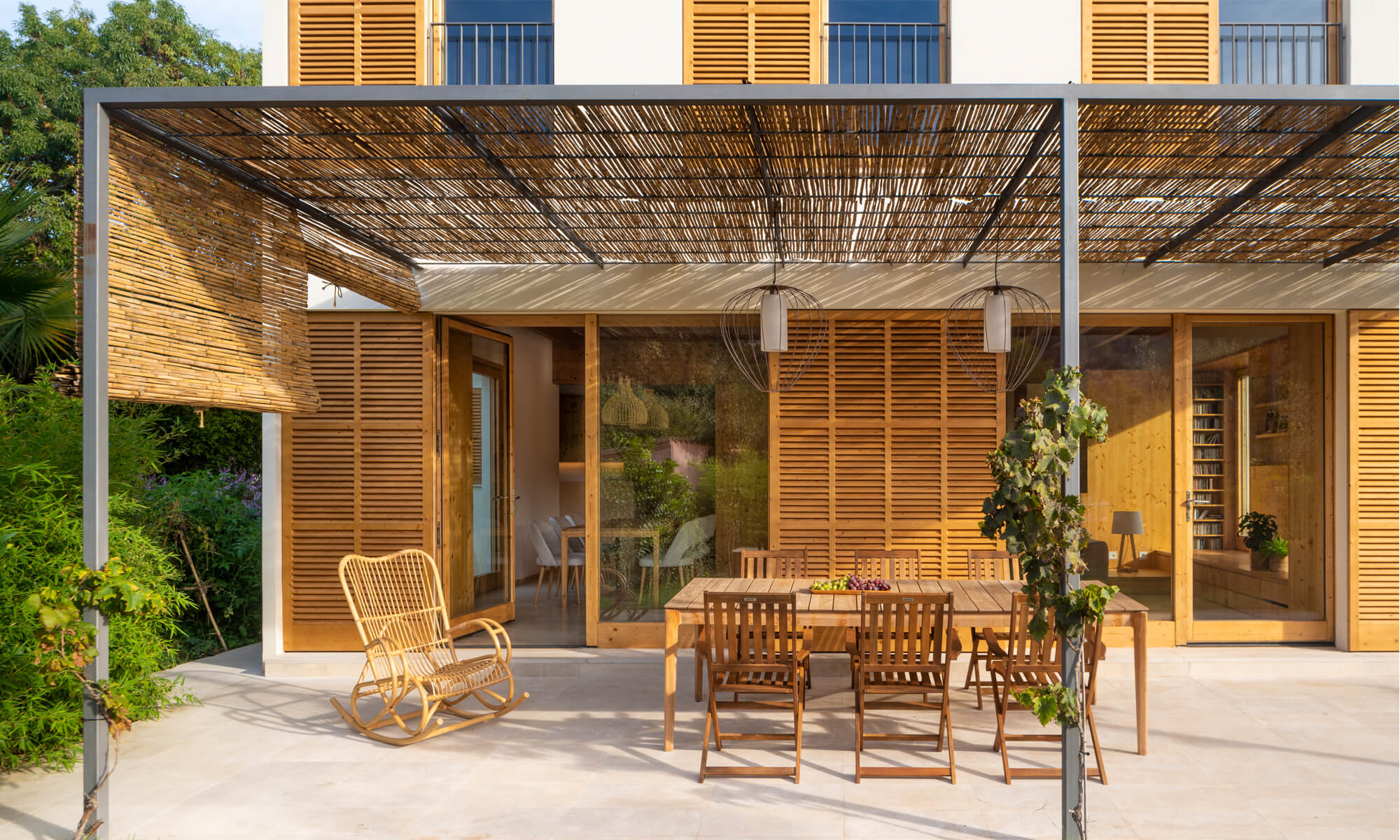
The house is located in the valley of Puigpunyent, in the Sierra de Tramuntana mountain range in Mallorca. It boasts optimal orientation towards the south and open views towards the mountains. It is surrounded by nature and is situated near the riverside forest of the Torrente de la Riera, which originates in the surroundings of the place.

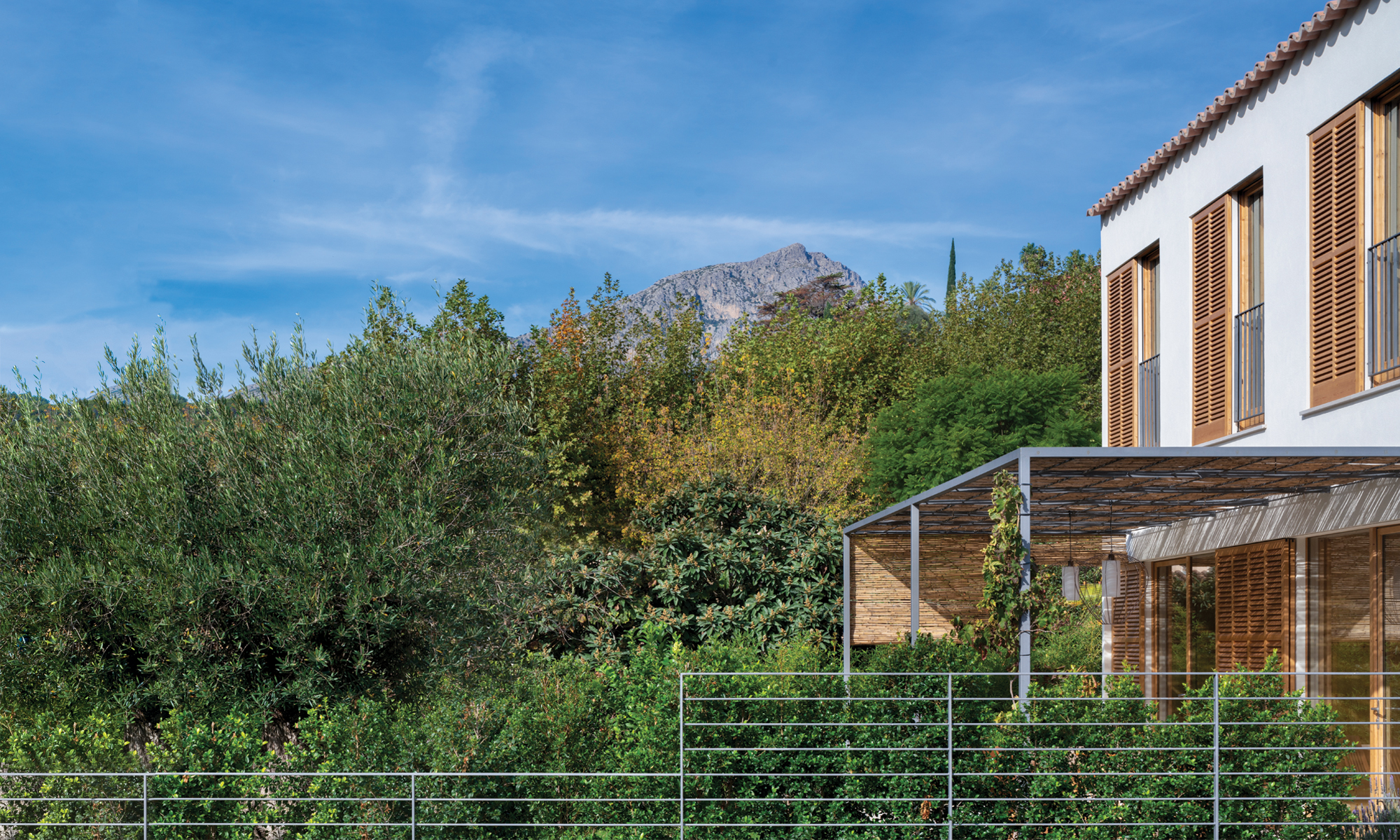
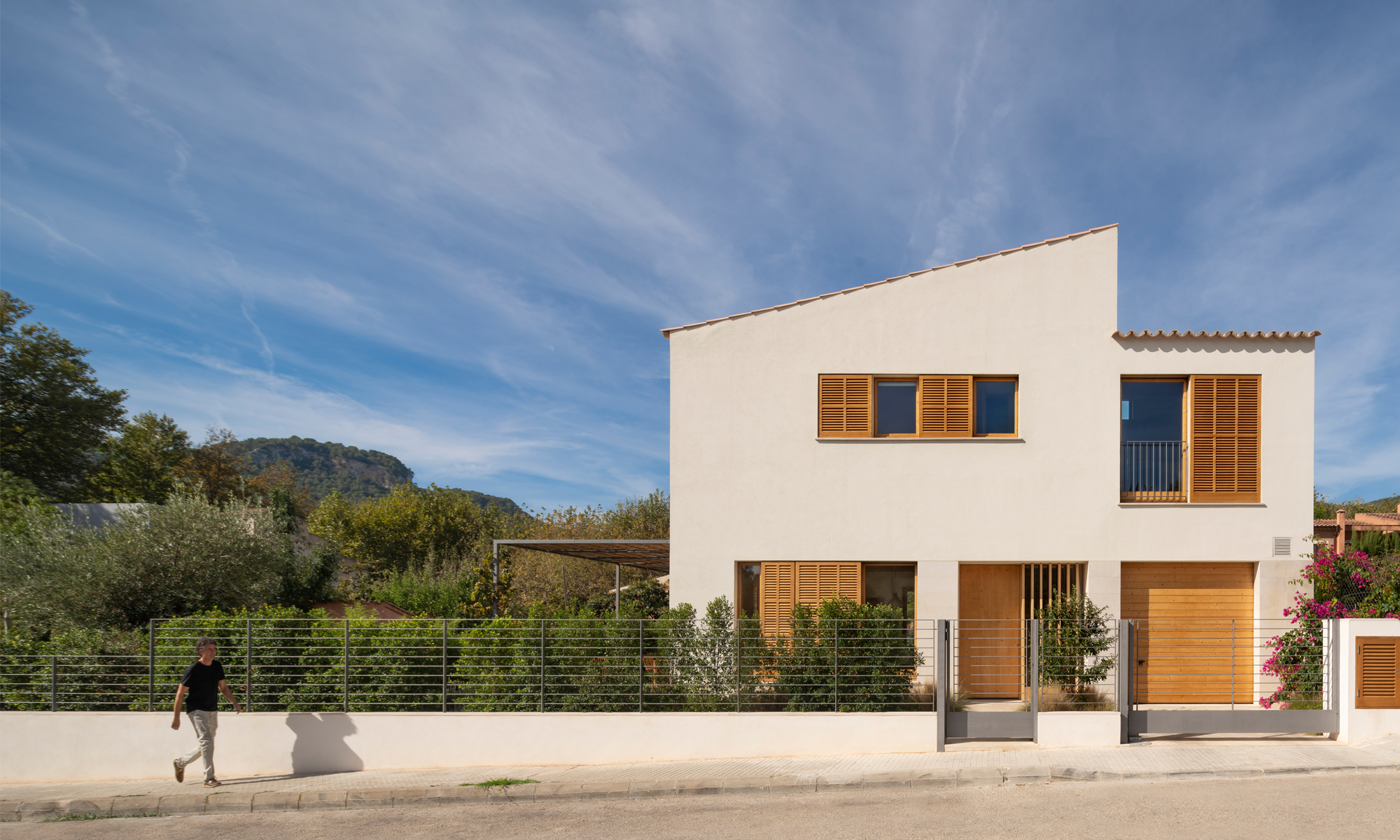
You can enter the house through a small porch where there are movable vertical slats that can be used to control the sunlight.
Inside, there is the living-dining room area, where the position and design of the furniture nuance and shape the space. The staircase, which is expressed as another piece of furniture, has a bookcase underneath it.
This room, which faces south, has access to the pergola that can be used to control the sunlight with the characteristic Mediterranean reed, with young vines clinging to it.
The fireplace is adapted to the requirements of airtightness and insulation of the passive house, becoming an element of connection with the rural context. With the same intention of integration with the environment, the exposed structure of the wooden beams is expressed on the ground and first floor ceilings.
The west-facing kitchen is separate, although visually connected to the living-dining room, with access to the outside where the aromatic plants and the vegetable garden is located.
On the first floor are the three south-facing bedrooms with amazing views. There is also a multi-purpose studio for the family’s artistic creation on this level.
Special attention has been paid to the colours and materials for the interior of the house, choosing warm tones, using wood, natural stone, and white walls covered with lime mortar. This gives the house a warm, natural and cozy feel.
The garden has been designed using plants and trees appropriate for the Mediterranean climate, while requiring minimum amounts of water. Aromatic plants and a vegetable garden have been planted near the kitchen area.
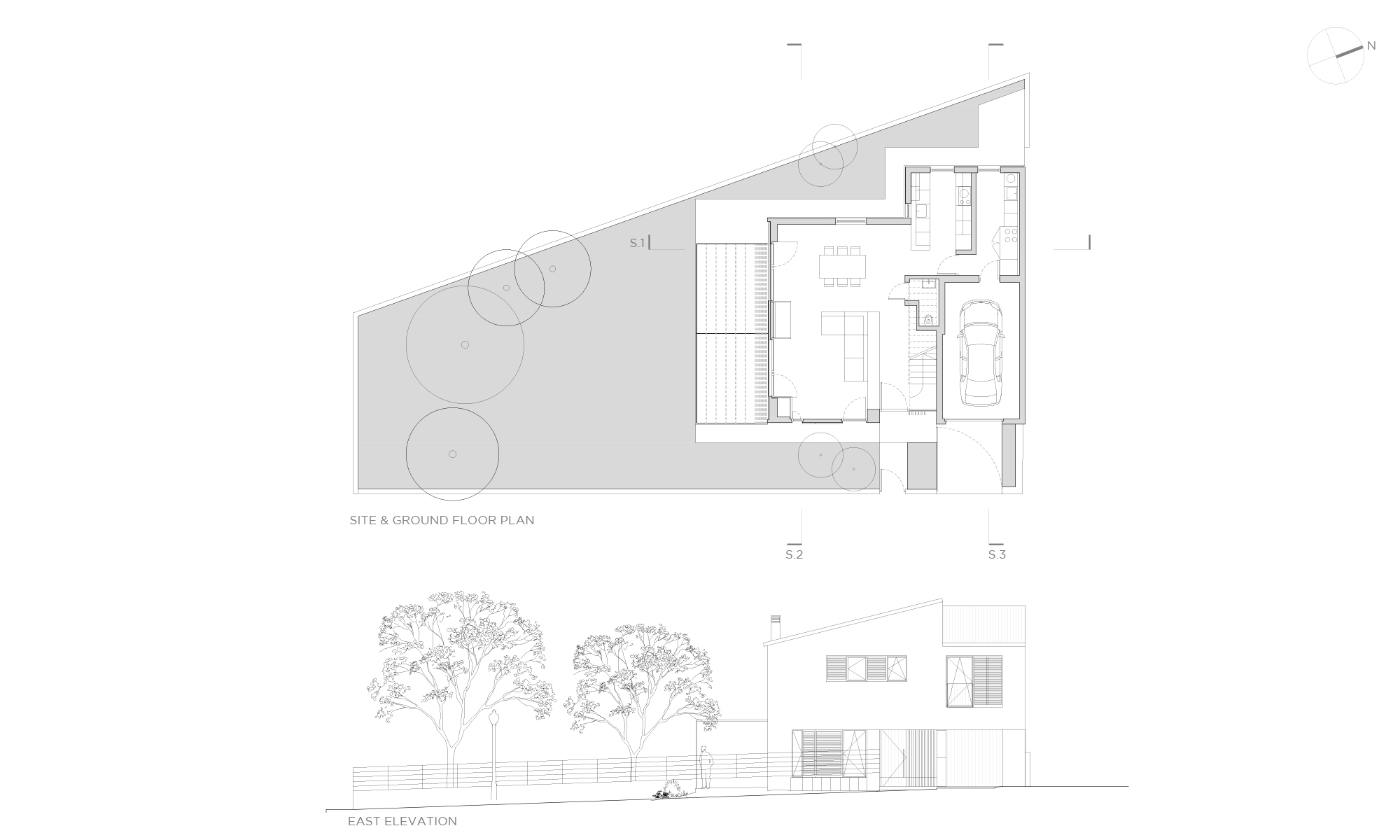
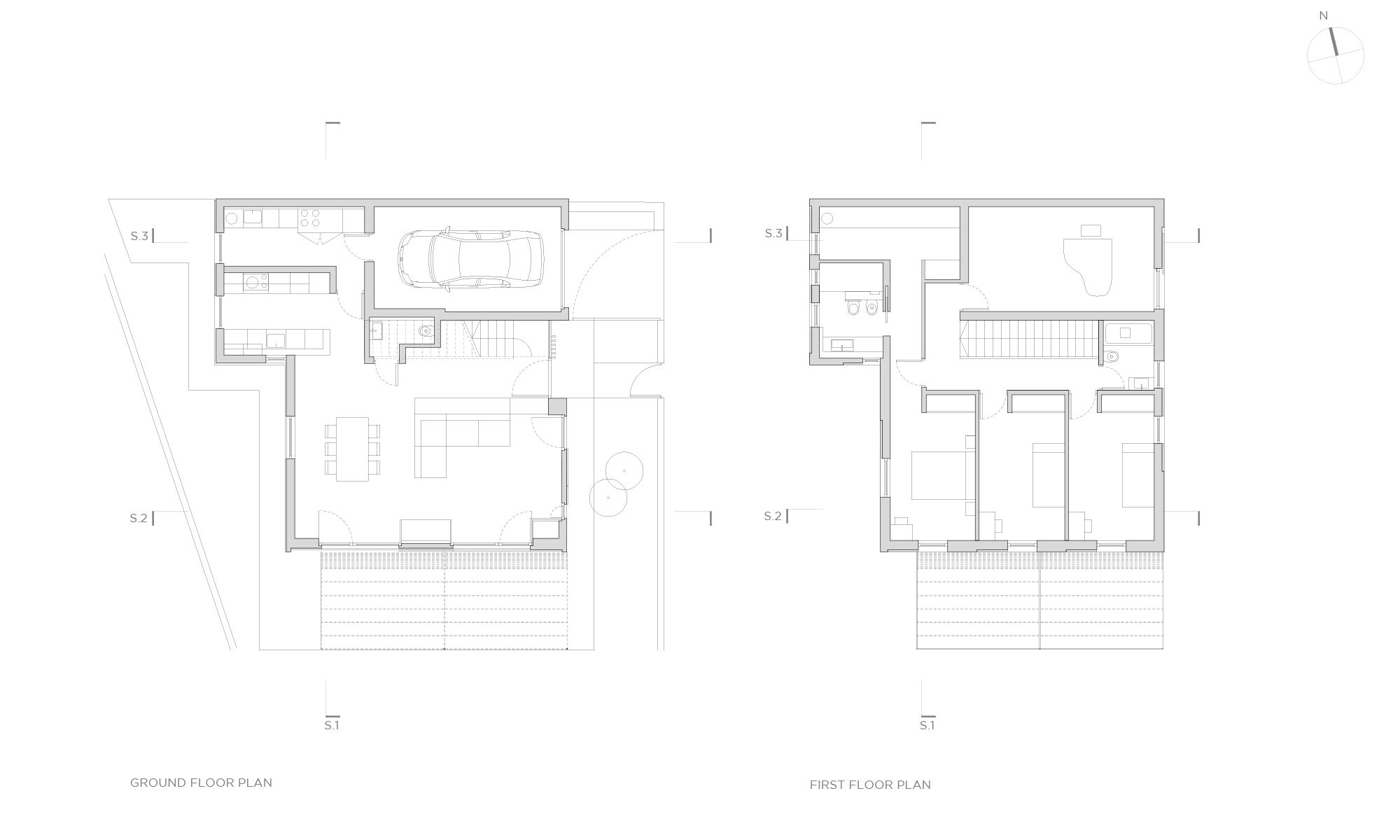
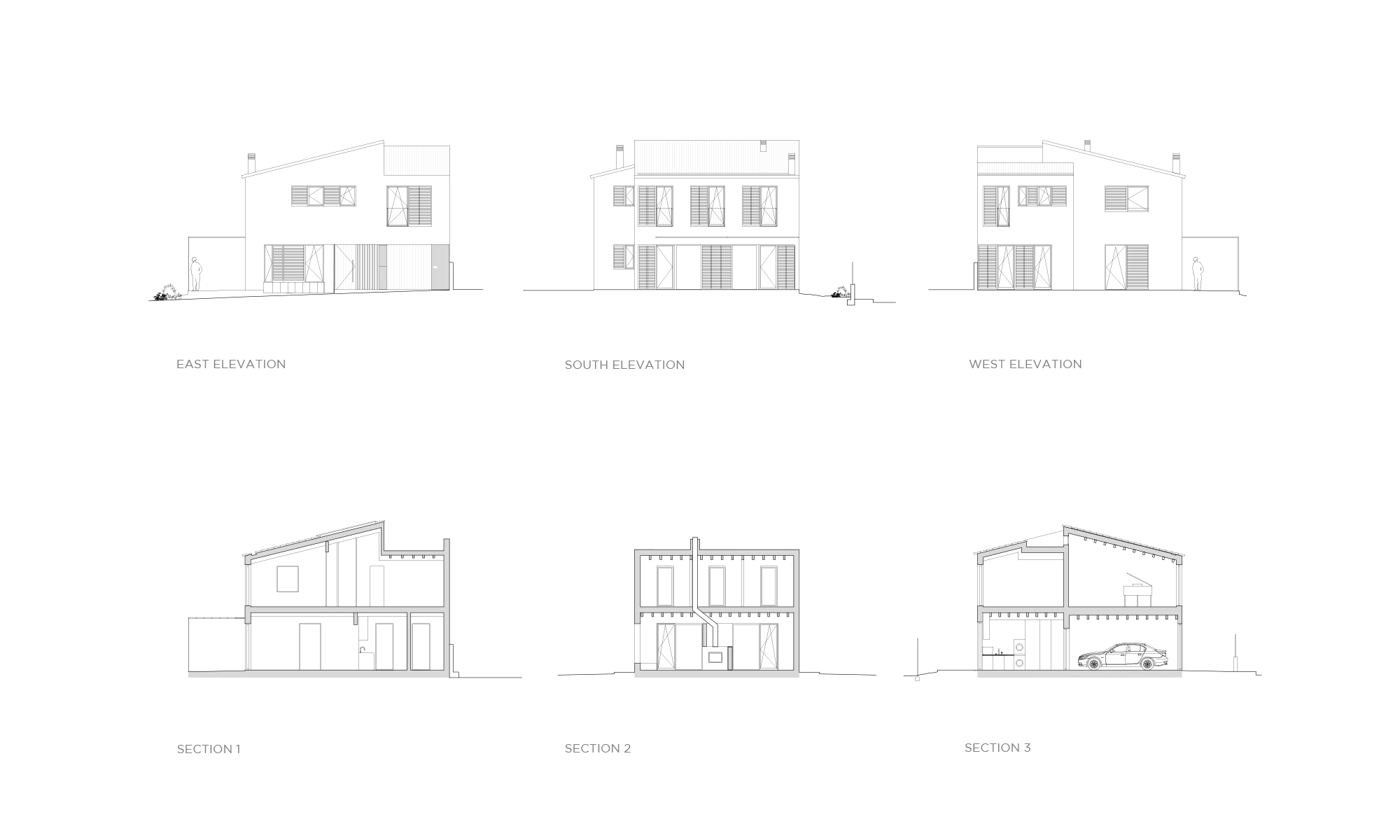
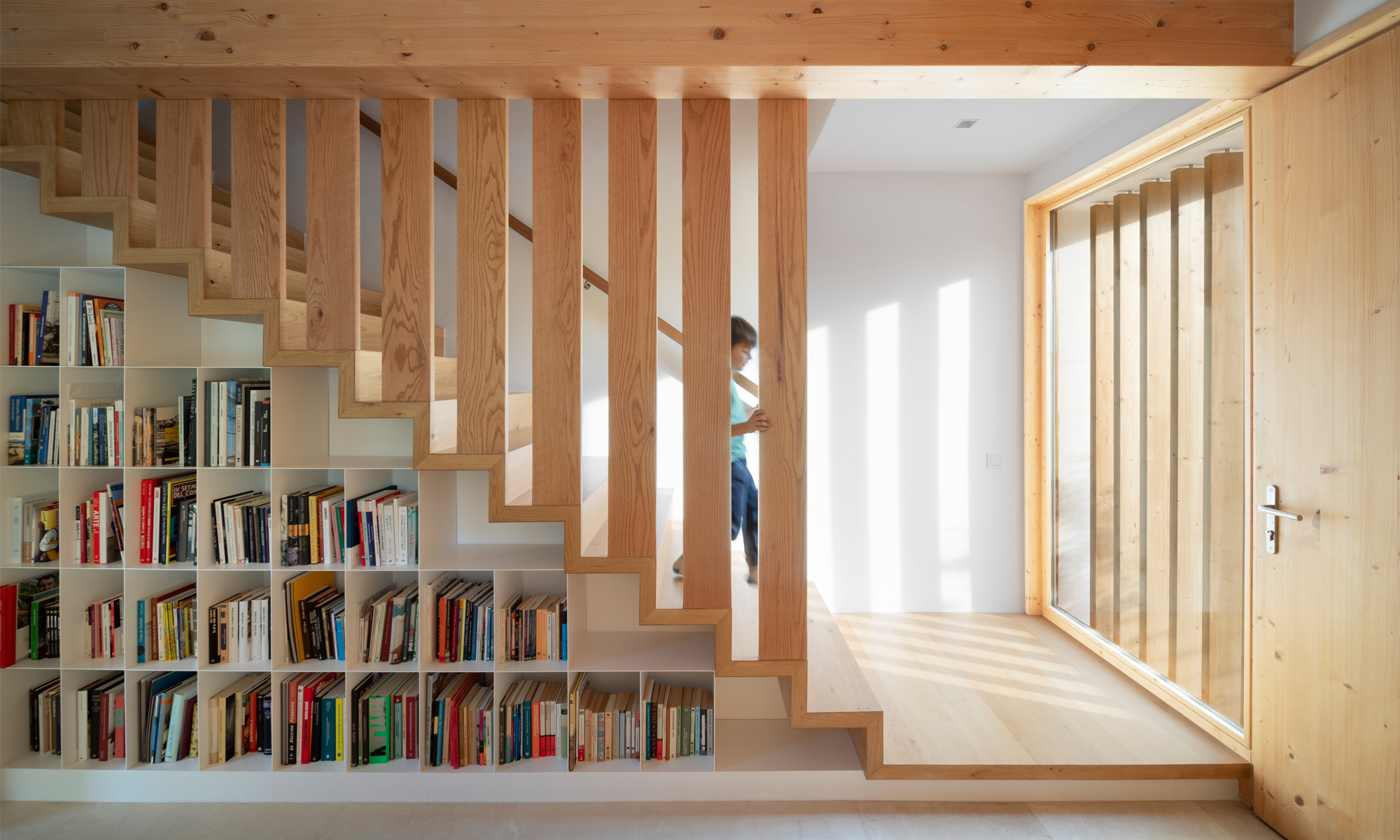
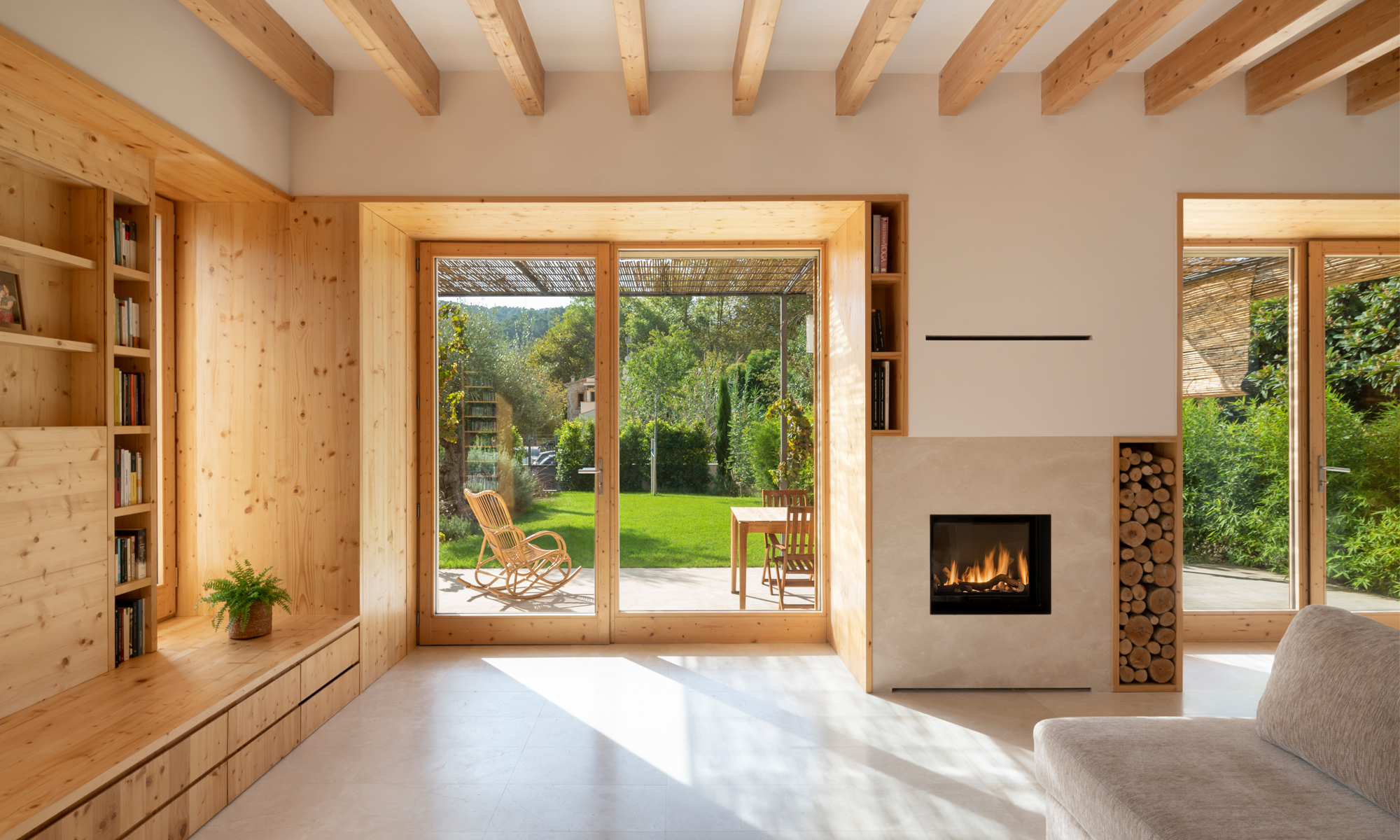
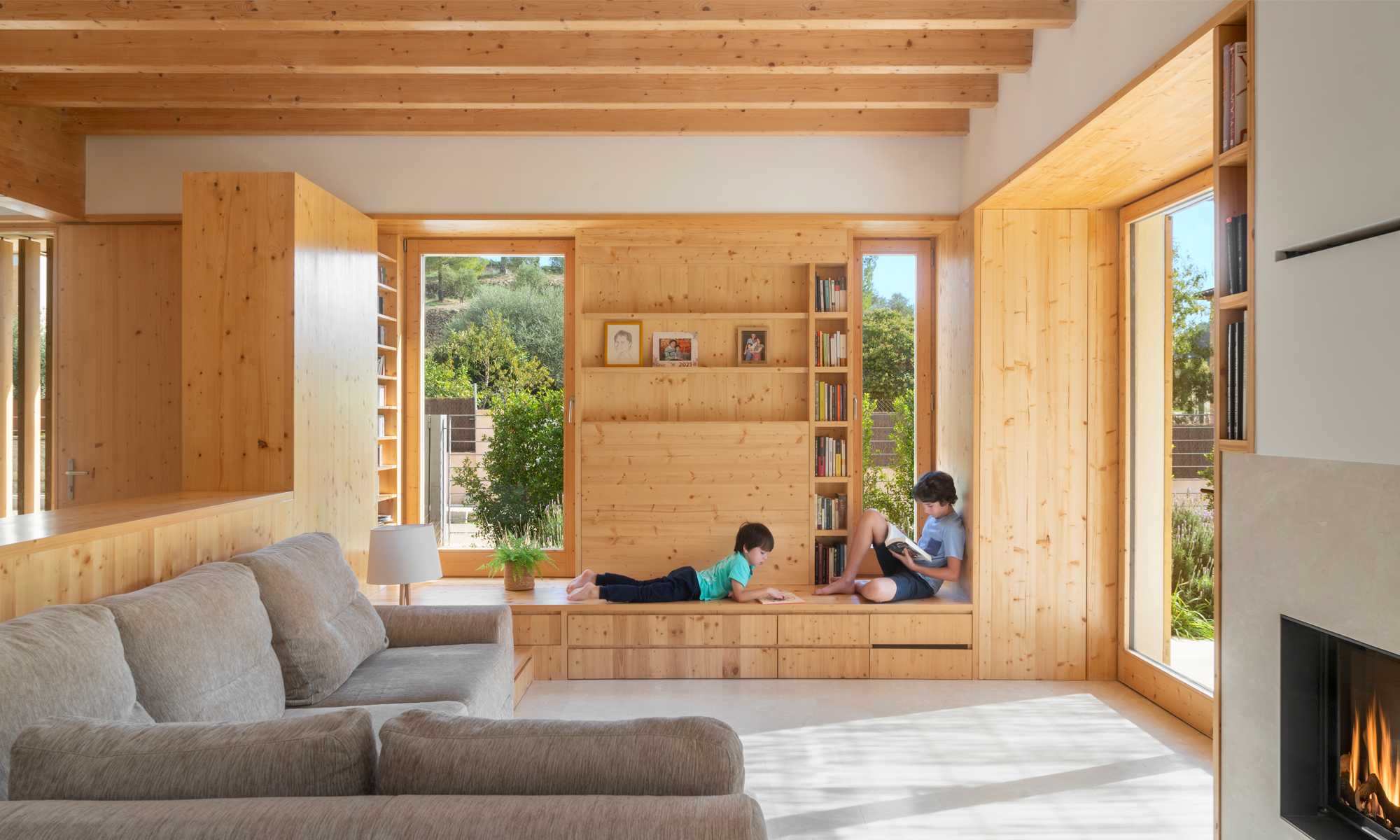
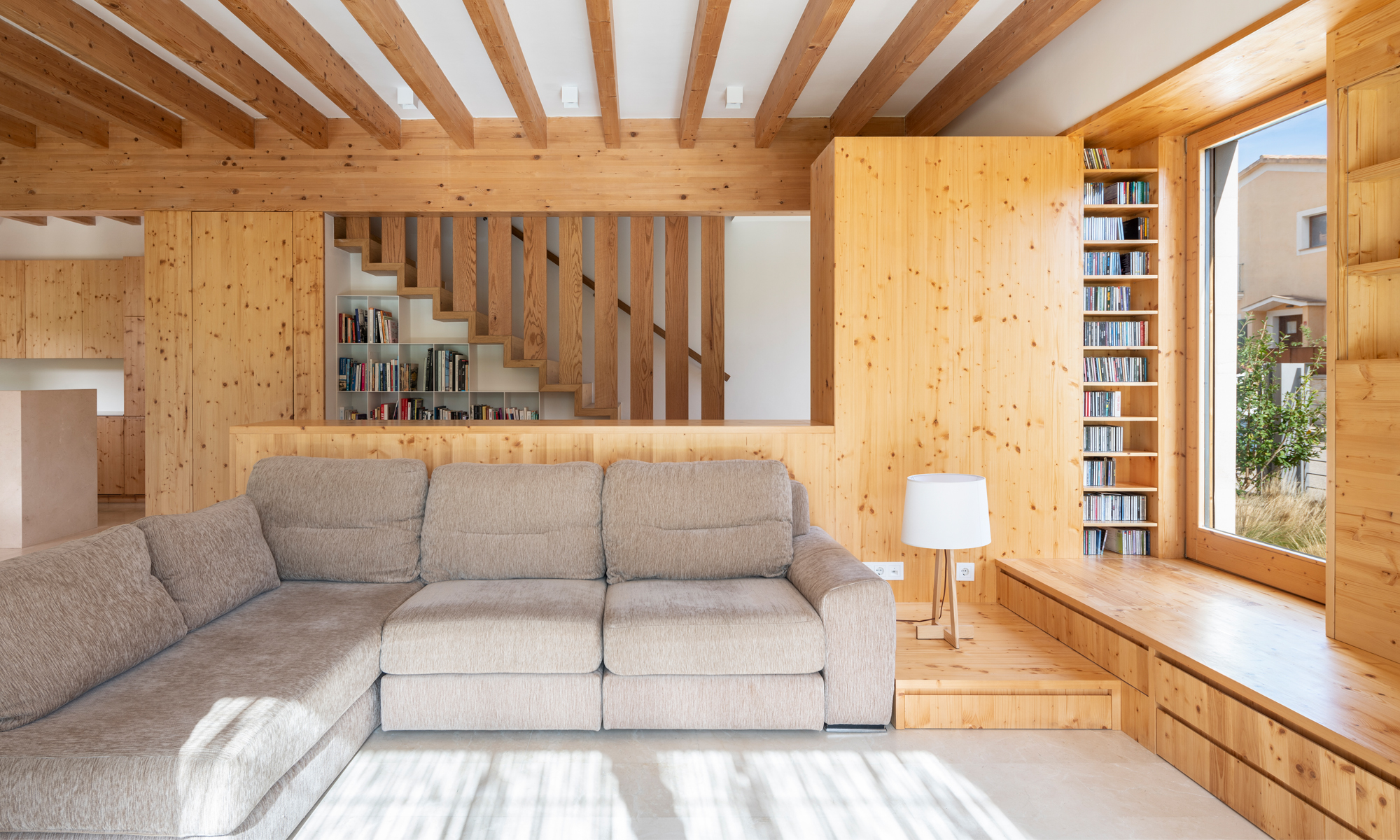
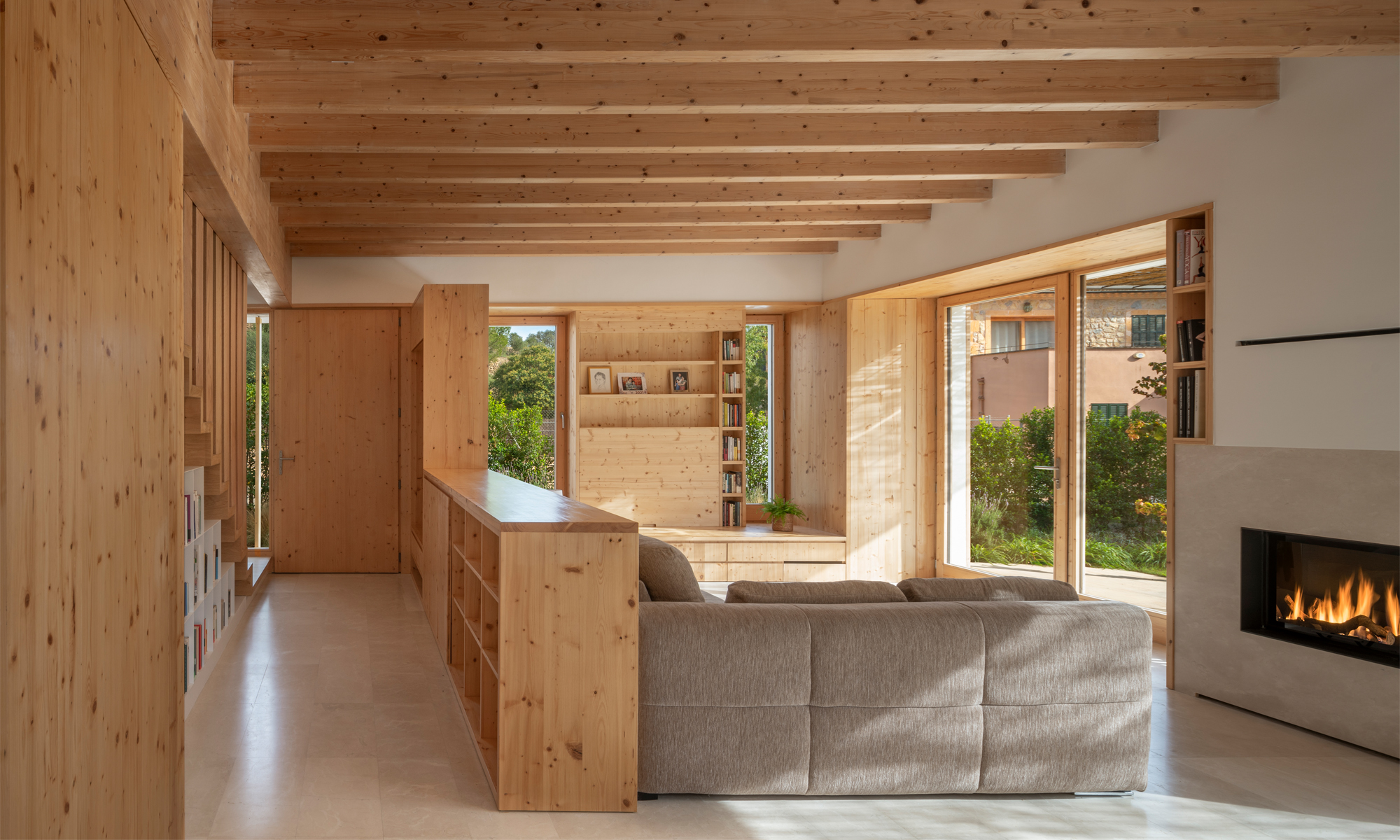
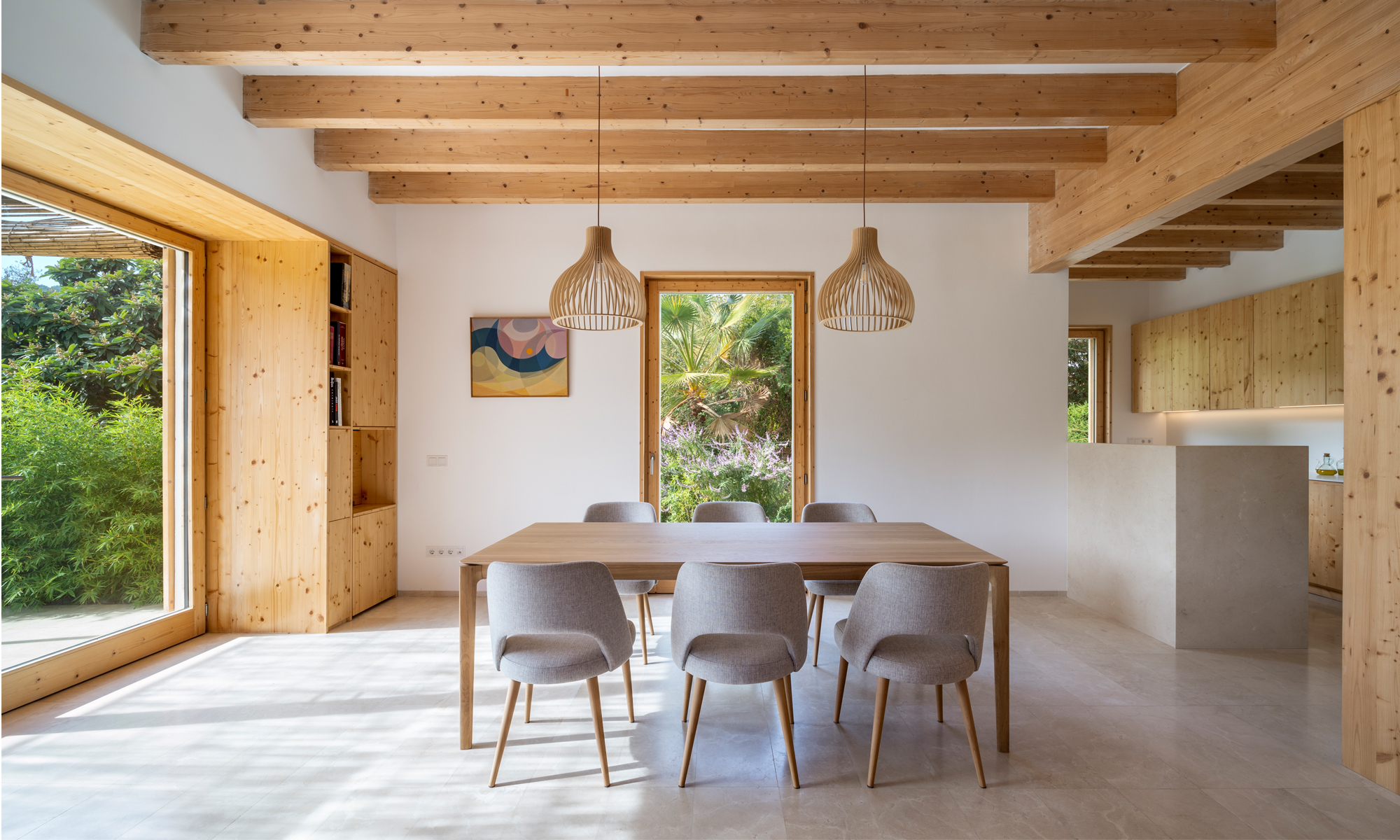
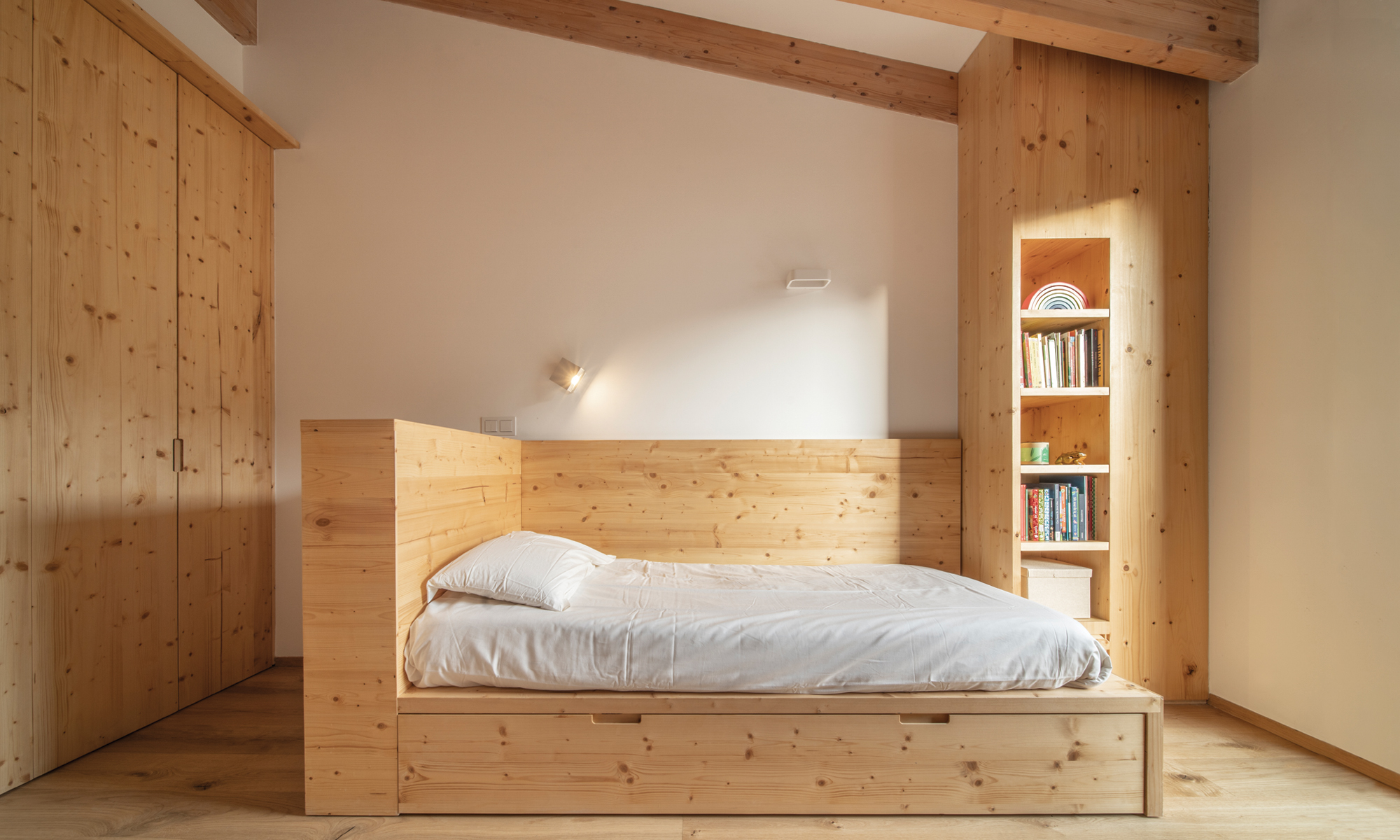
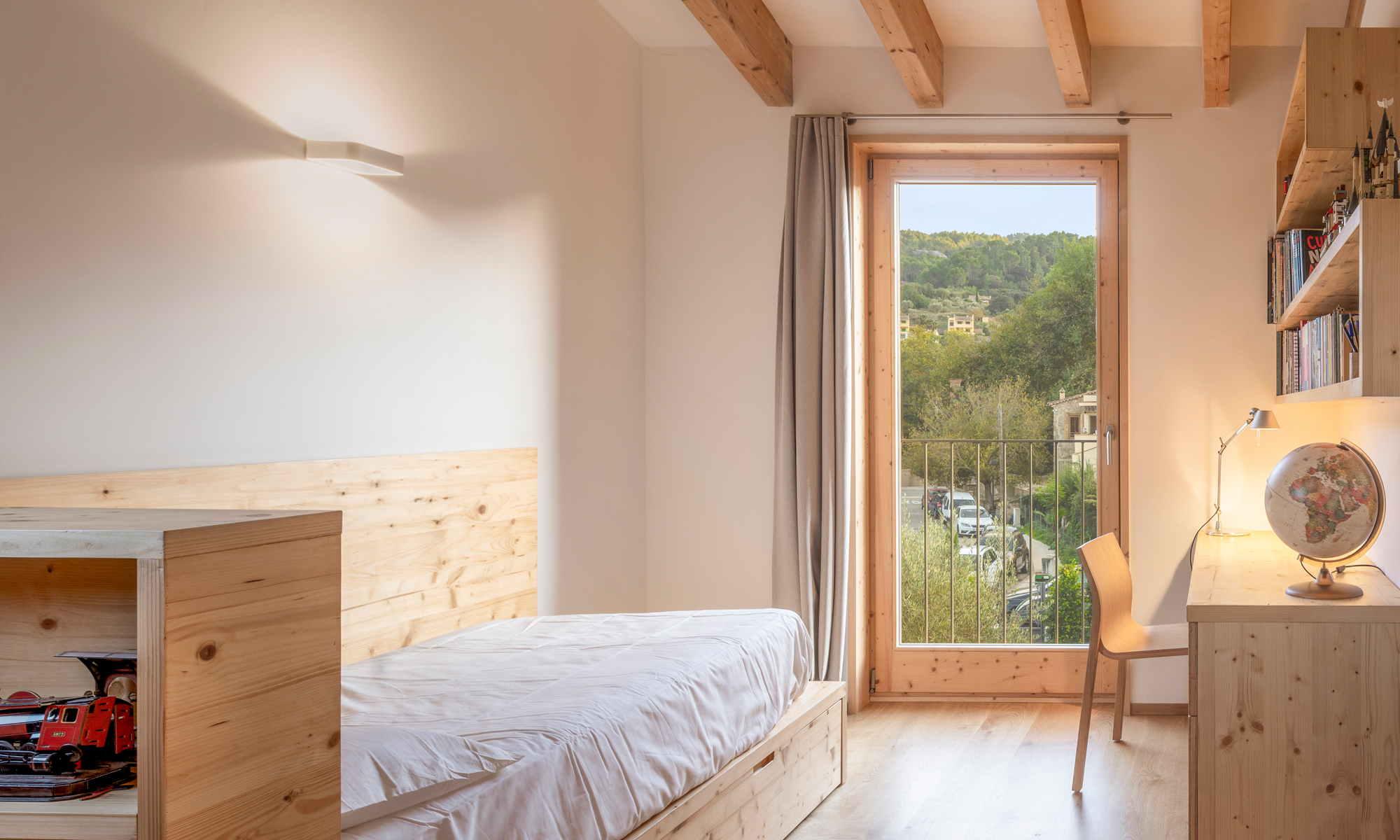
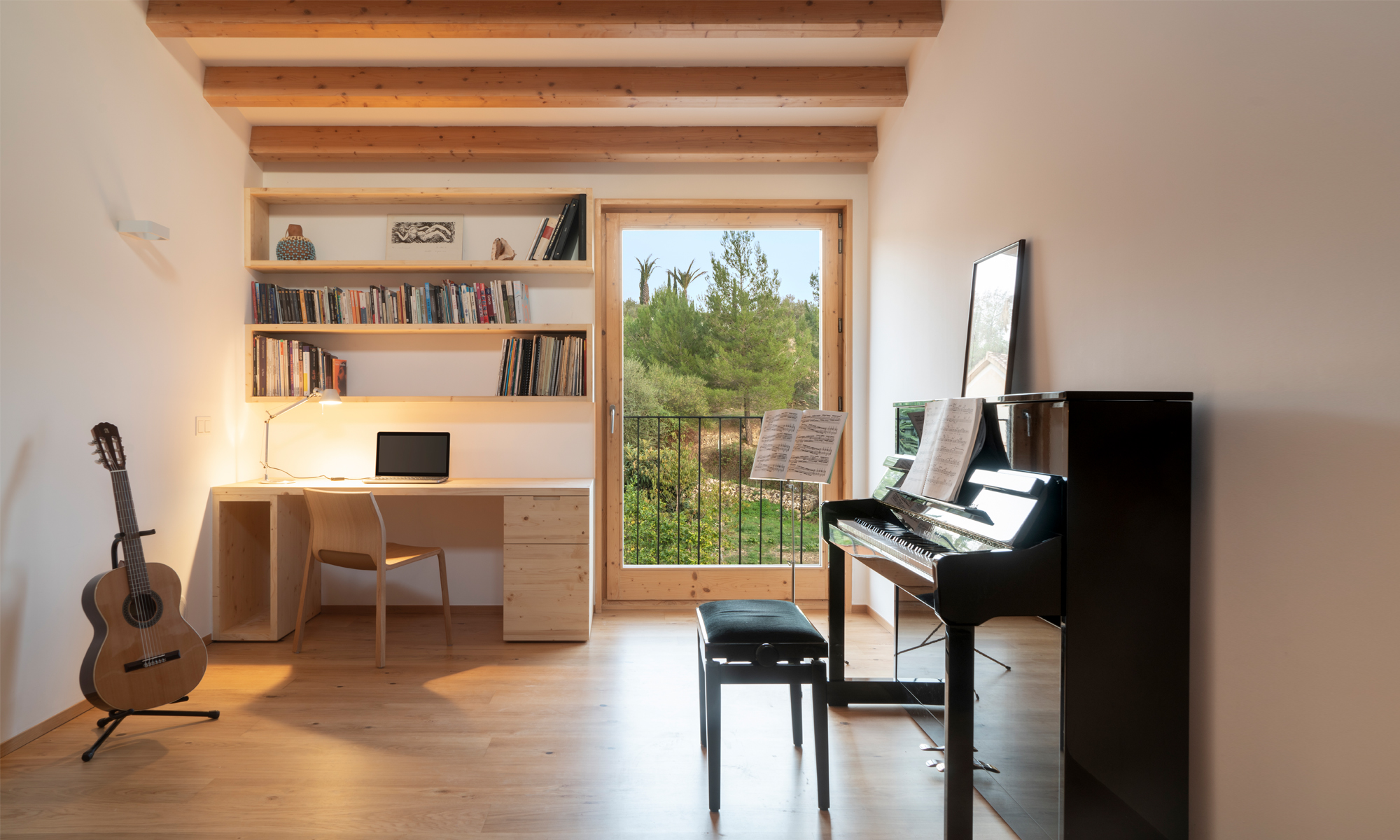
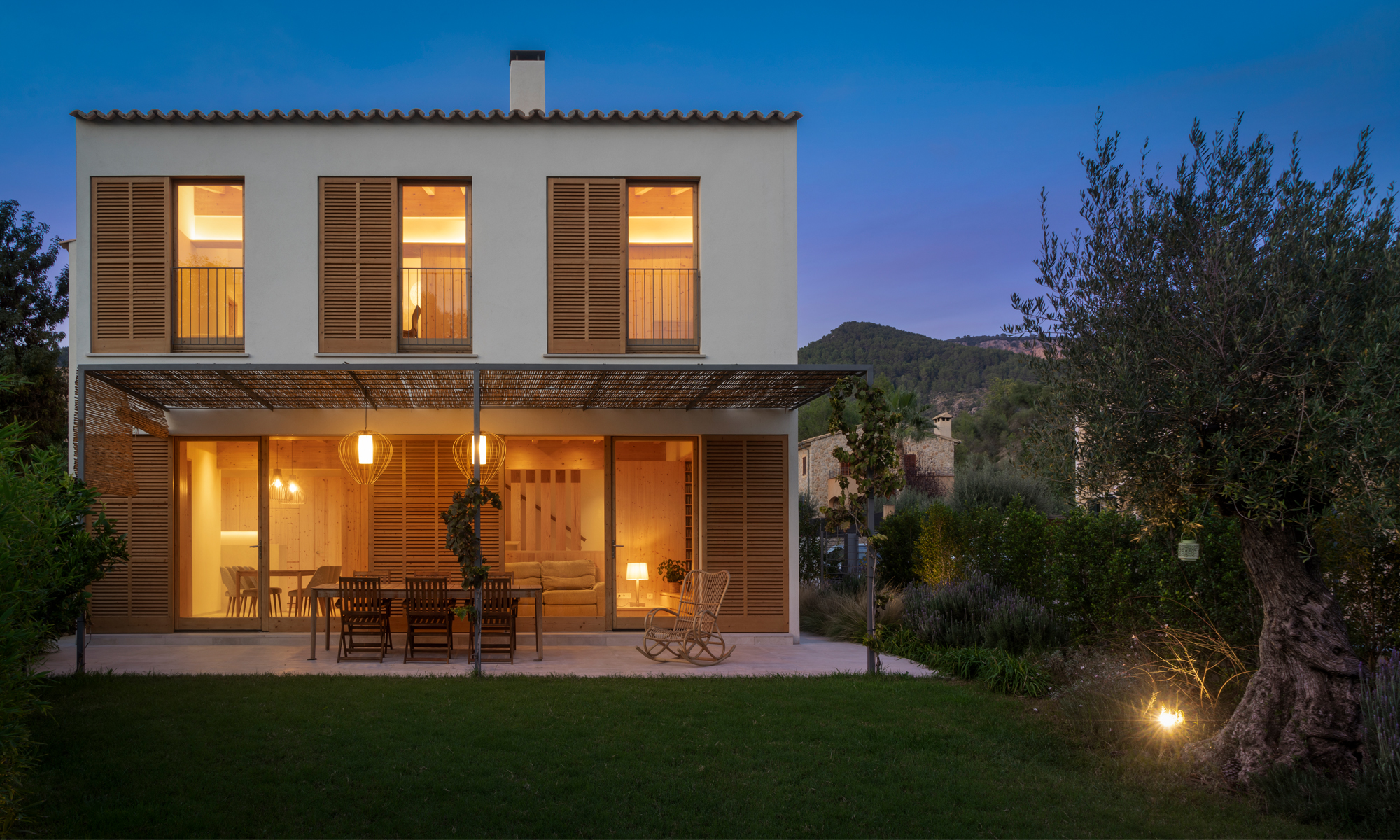
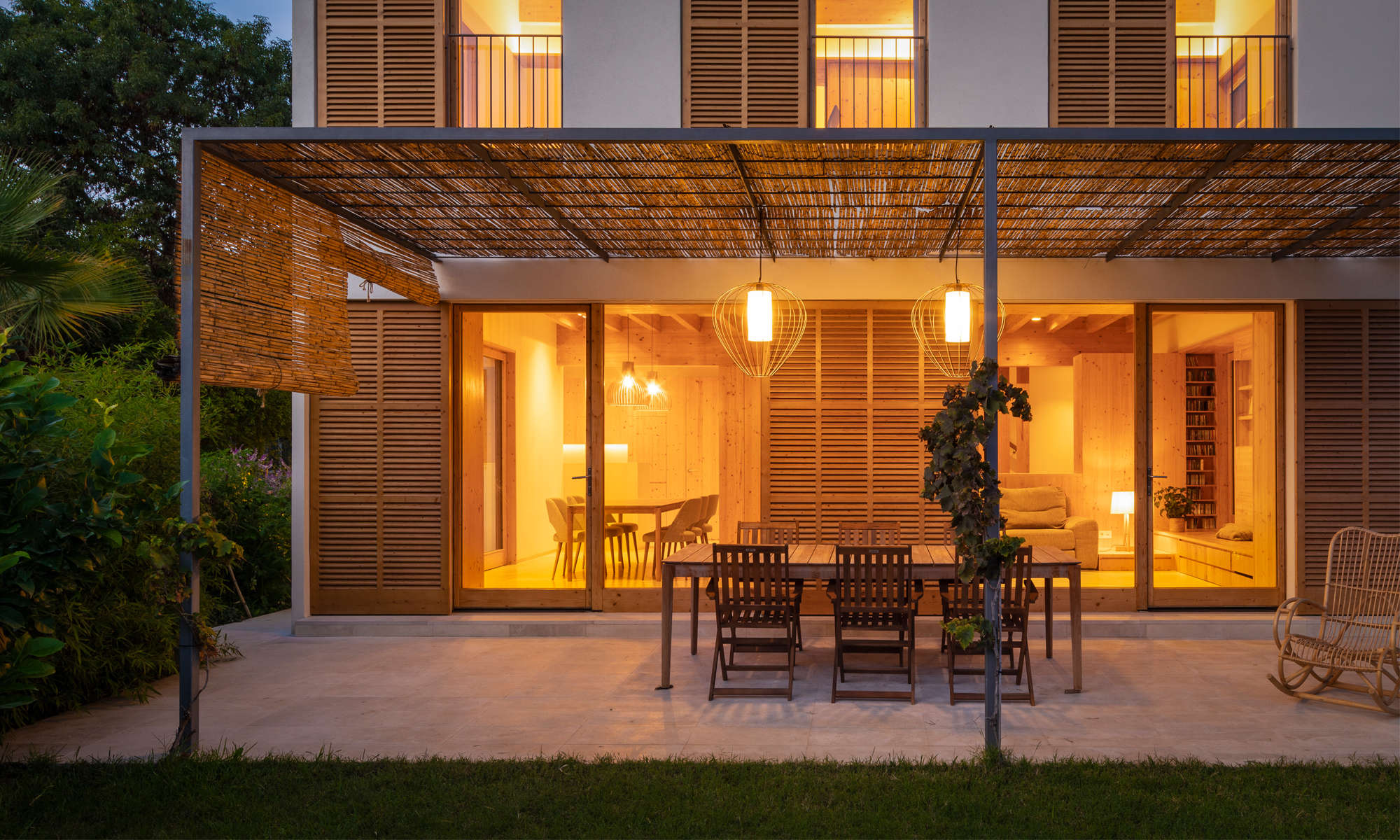
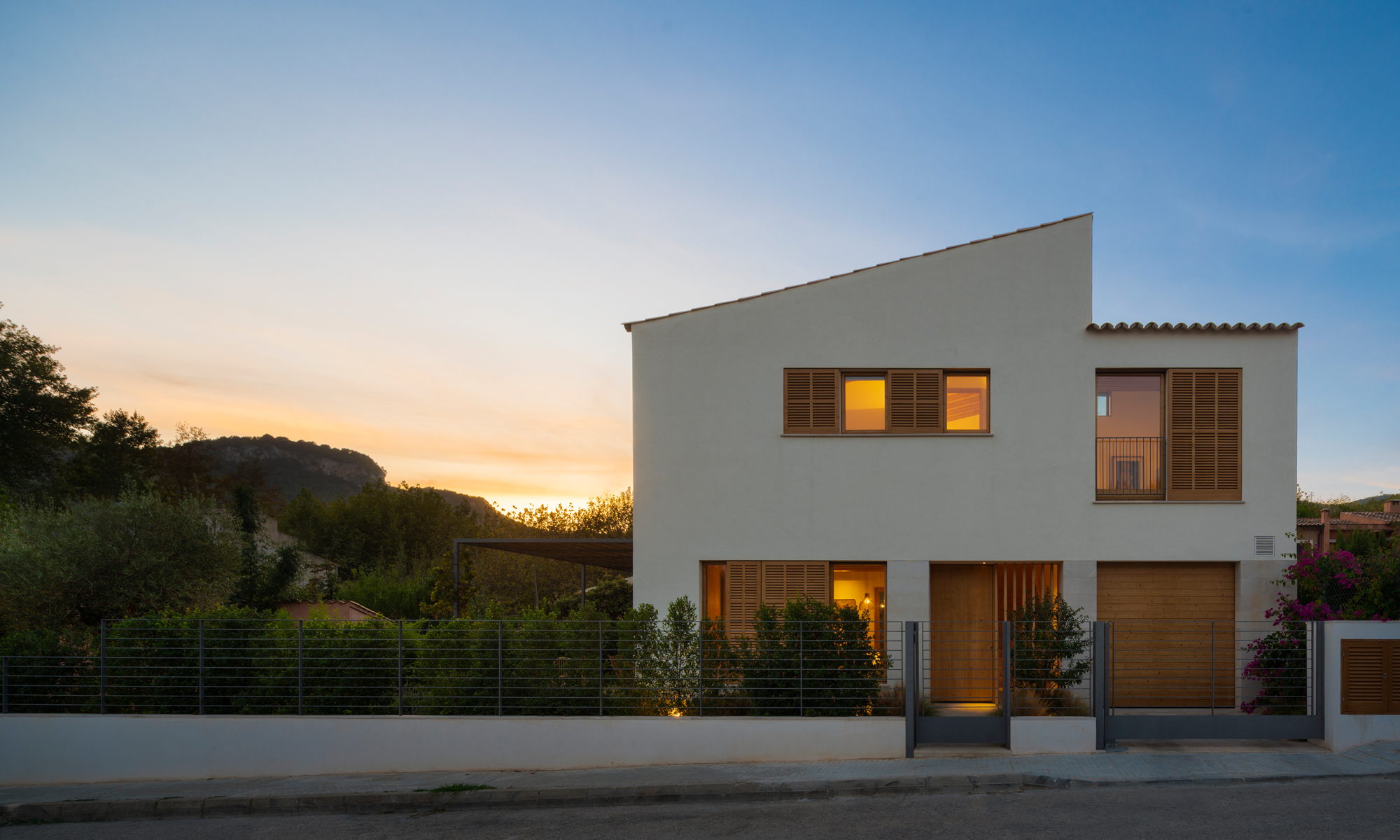
ECO-PASSIVE HOUSE
The Eco house uses the main passive resources such as south facing orientation, sunlight control, high thermal insulation thickness, control of thermal bridges, good air tightness to outside air, double flow of mechanical ventilation with heat recovery and high insulation and airtight windows.
The solar panels cover the energy demand for the rest of the house.
Although it is a passive house, cross ventilation has been taken into account, since on summer nights the natural coolness of the valley is used to cool the house naturally.
The Eco house was built with ecological and sustainable materials, horizontal wood structure from sustainably managed forests, ceramic brick, hydraulic lime mortar, natural cork insulation, and lime-based acrylic finishes on the facade. For the interior finishes, natural oil-based wood products, silicate paints and stone treatments with A+ and “Ecolabel” seals have been used, i.e. almost “0” VOC (volatile organic compounds) emission in the interior, ecological and environmentally friendly.
In this way, the building envelope of the house has been conceived as a “third skin”, all the materials of which it is composed allow breathability to water vapour, and are free of VOCs. It should be added that materials such as lime, being hygroscopic, allow humidity to be regulated naturally.
With the intention of minimising the ecological footprint, the “kilometre “0” concept has been incorporated by working with builders and industrialists close to the construction area and, where possible, using local or national materials.
All these applications and criteria have contributed to ensuring that the house’s energy consumption is very low, whilst at the same time providing a very high level of comfort and well-being for the users, as well as contributing to a respectful commitment to the environment.


In particular, all the cabinets, shelves, tables, doors, beds and the kitchen have been designed with a single type of fir wood board from reforested forests, thus using a single element that has made it possible to create all the designs in a very versatile way.
Some furniture has incorporated movement and transformation in its design, such as the bookcase-cupboard that can be converted into a table creating a new study area, or the furniture around the television area, which can be hidden and thus become a seating area.
